La Paz, Bolivia
An Andean Metropolis
La Paz is the capital of Bolivia sitting nearly 12,000ft above sea level in the Central Andes. It’s a melting pot for Bolivian peoples, both indigenous and urban as well as a gastronomic hub for Andean and Amazonian flavors. Between its green spaces, markets and skyscrapers, the metropolis is a sprawling place to explore. We wandered the busy streets, rode the teleferico high above the city and hiked to urban lookouts. At night, as the colorful roofs fade into darkness, the city begins to glow with the warmth of twinkle lights.
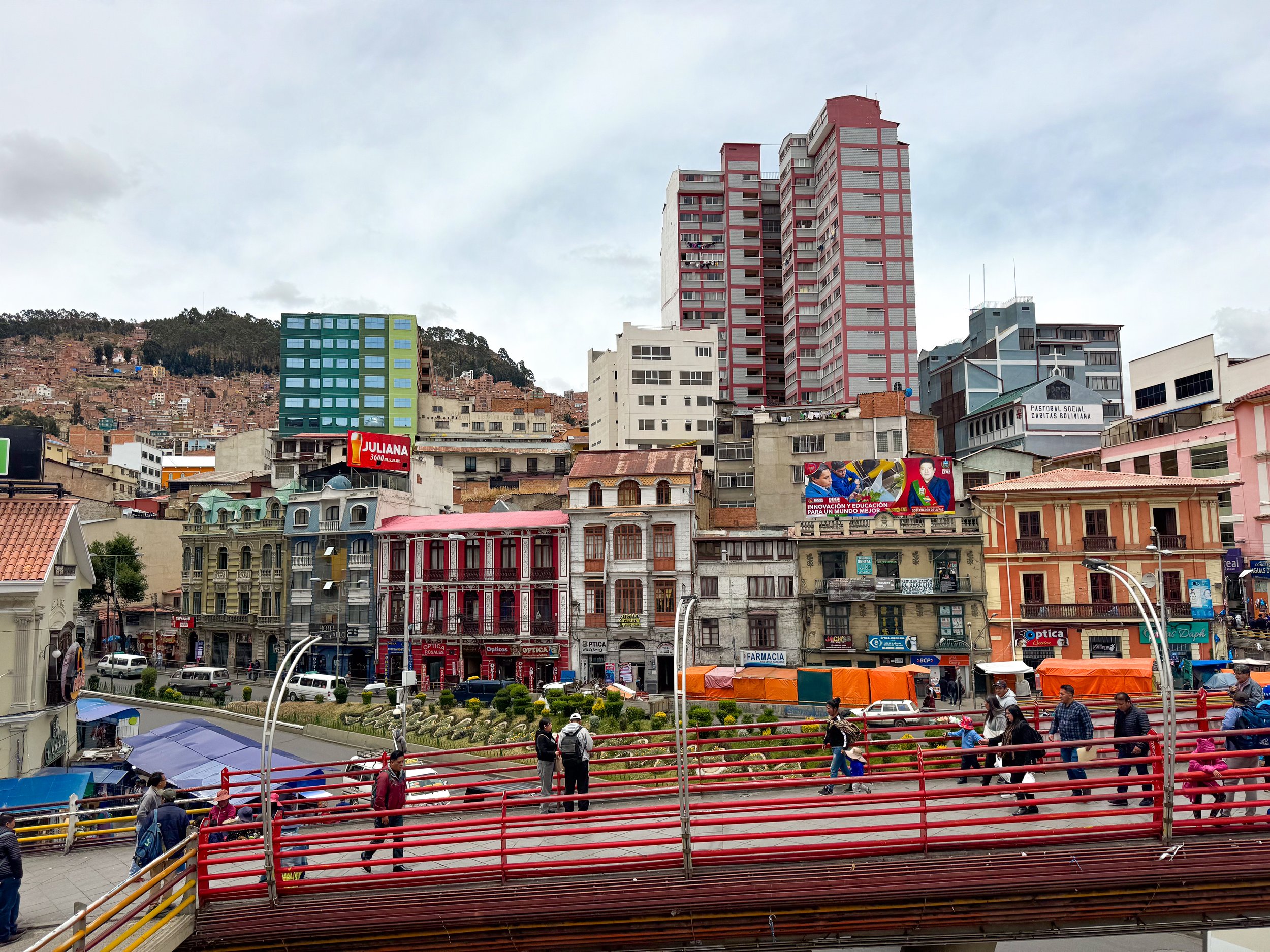
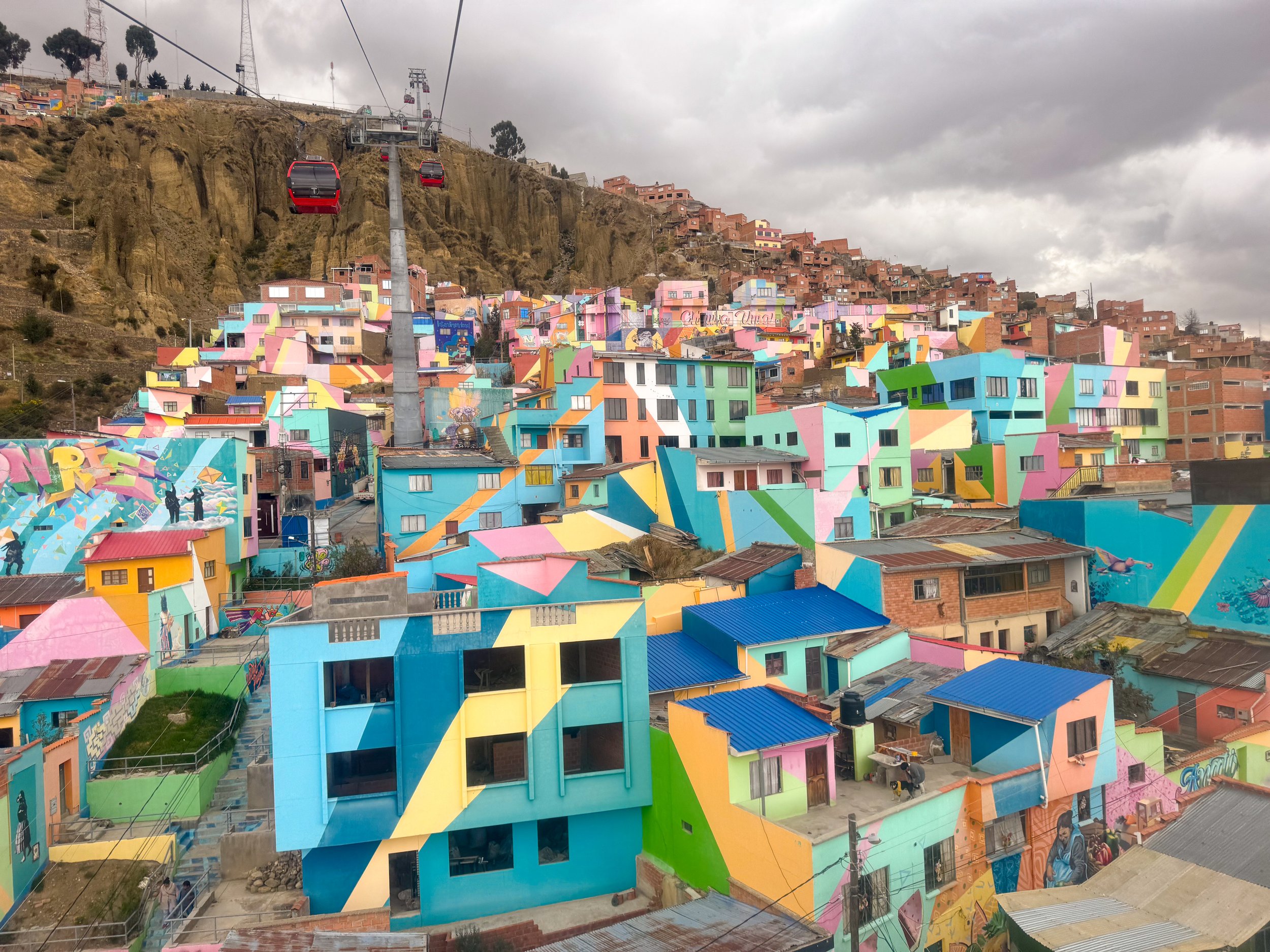
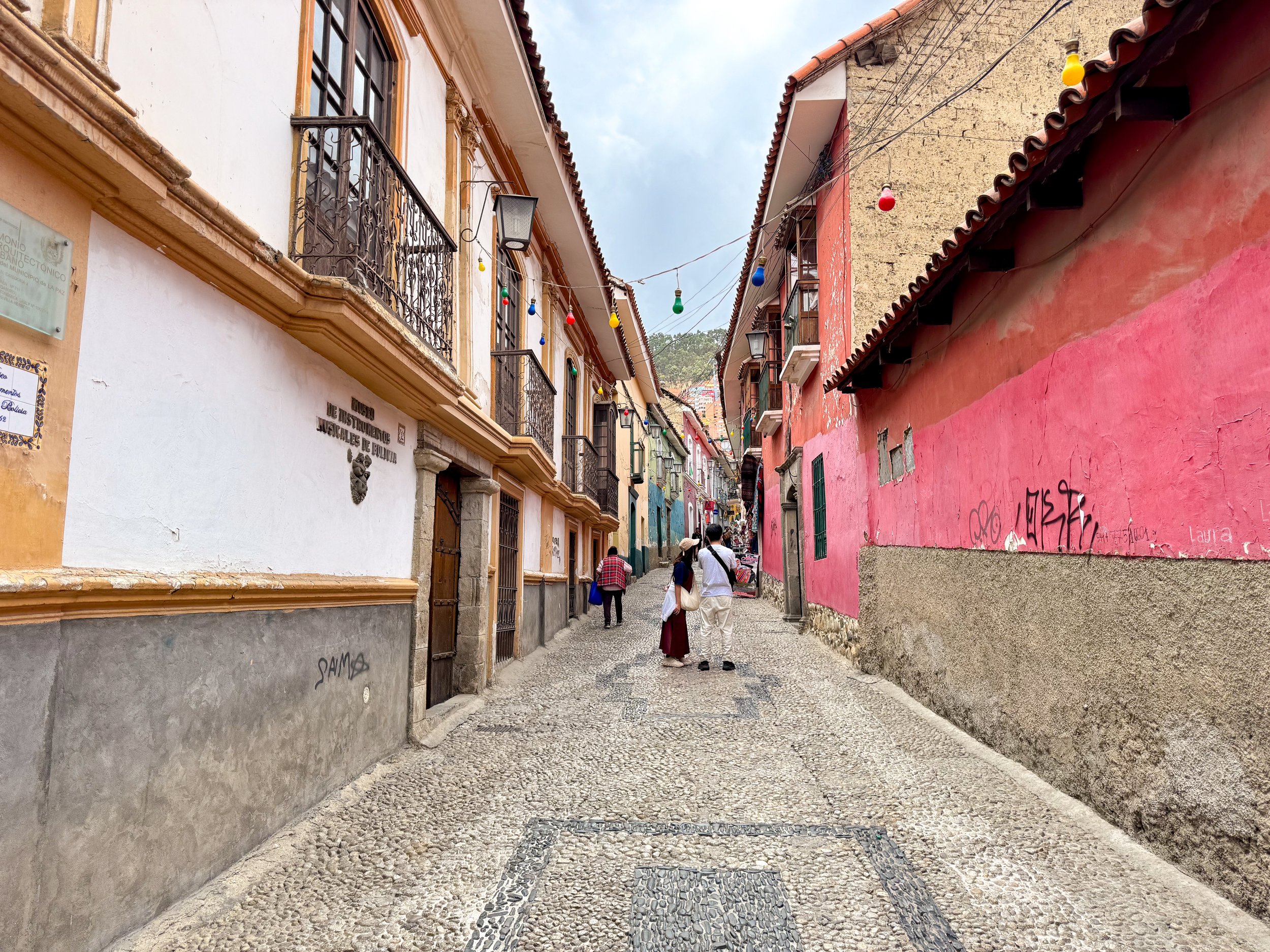
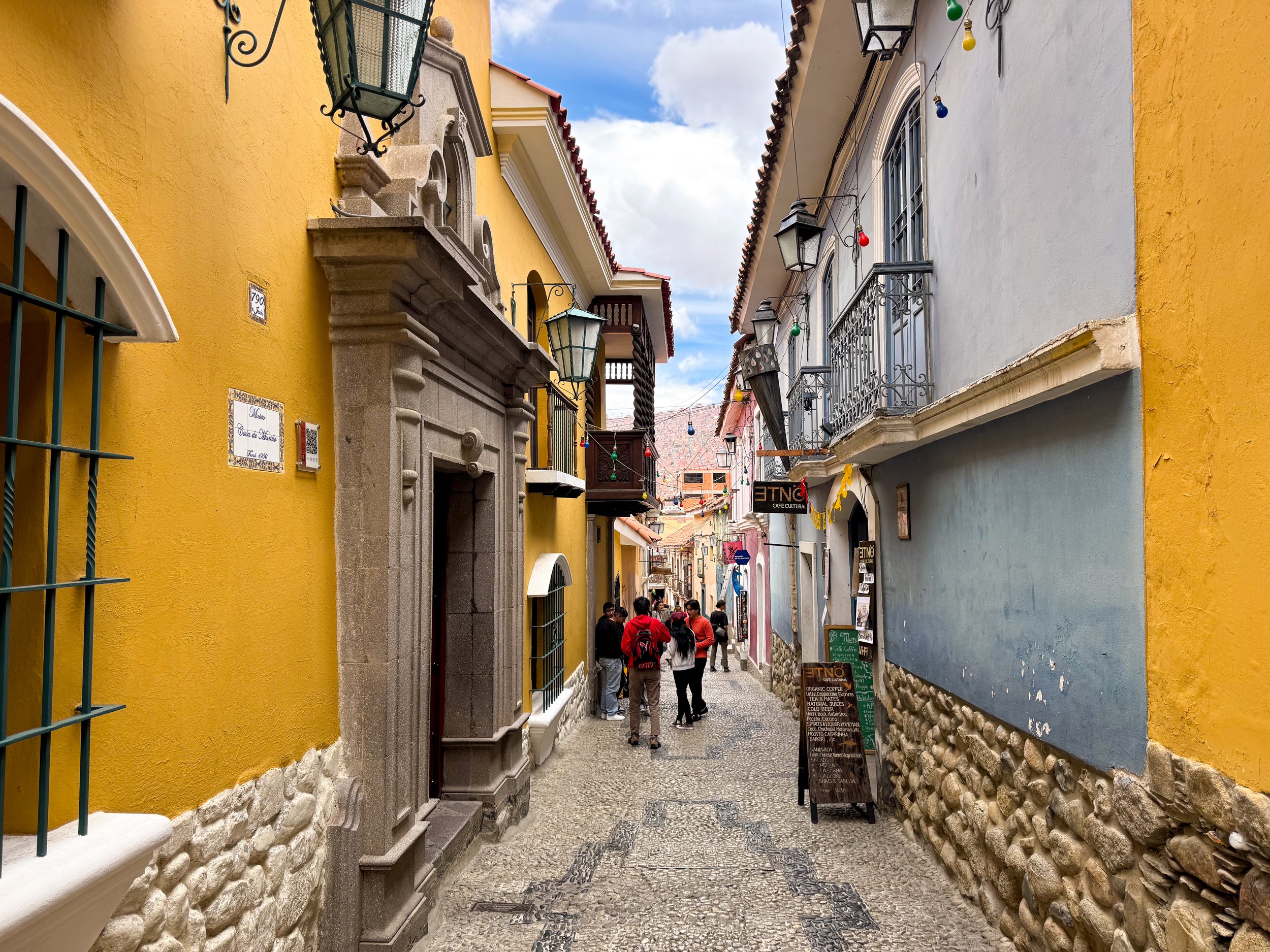
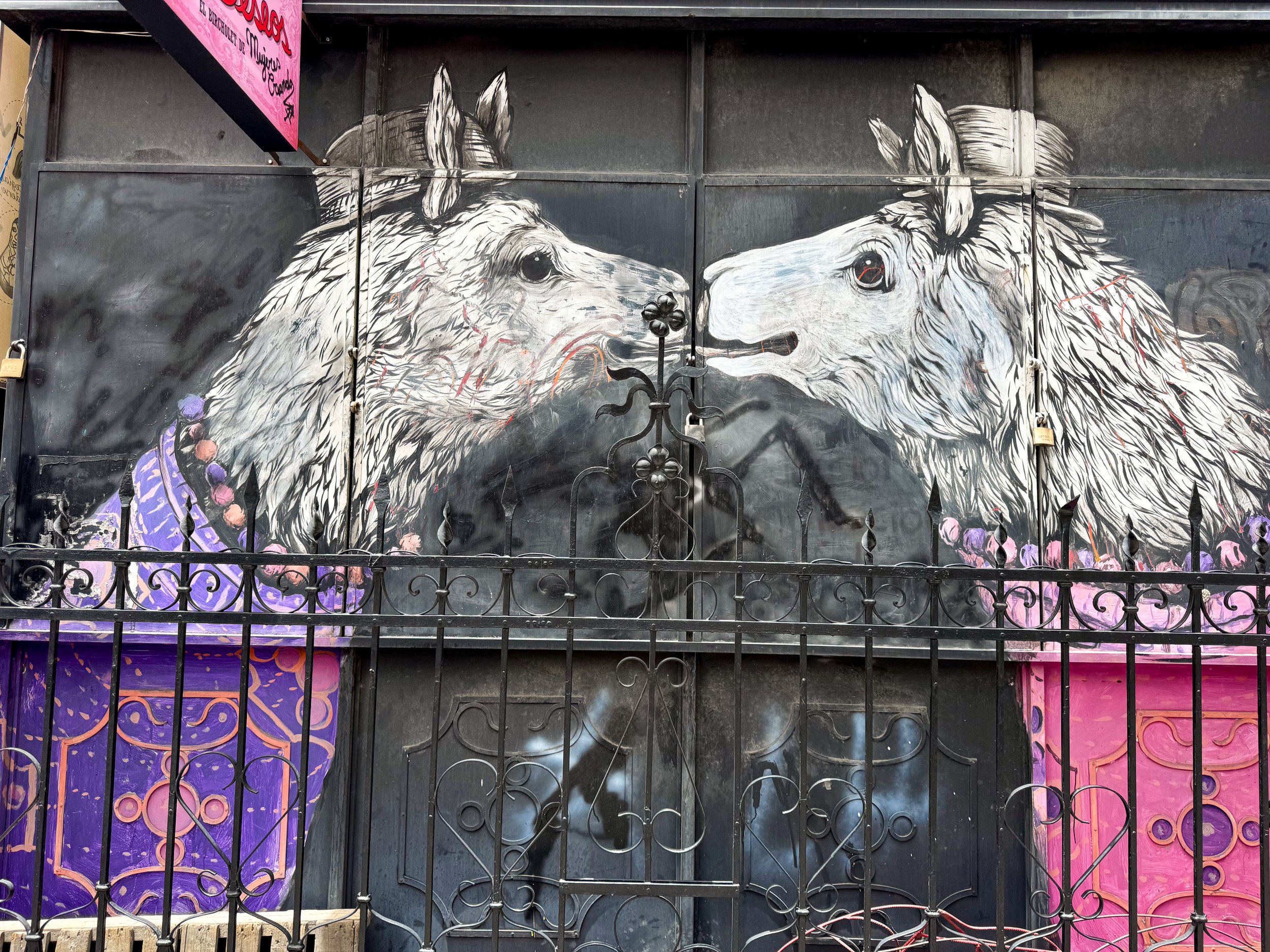
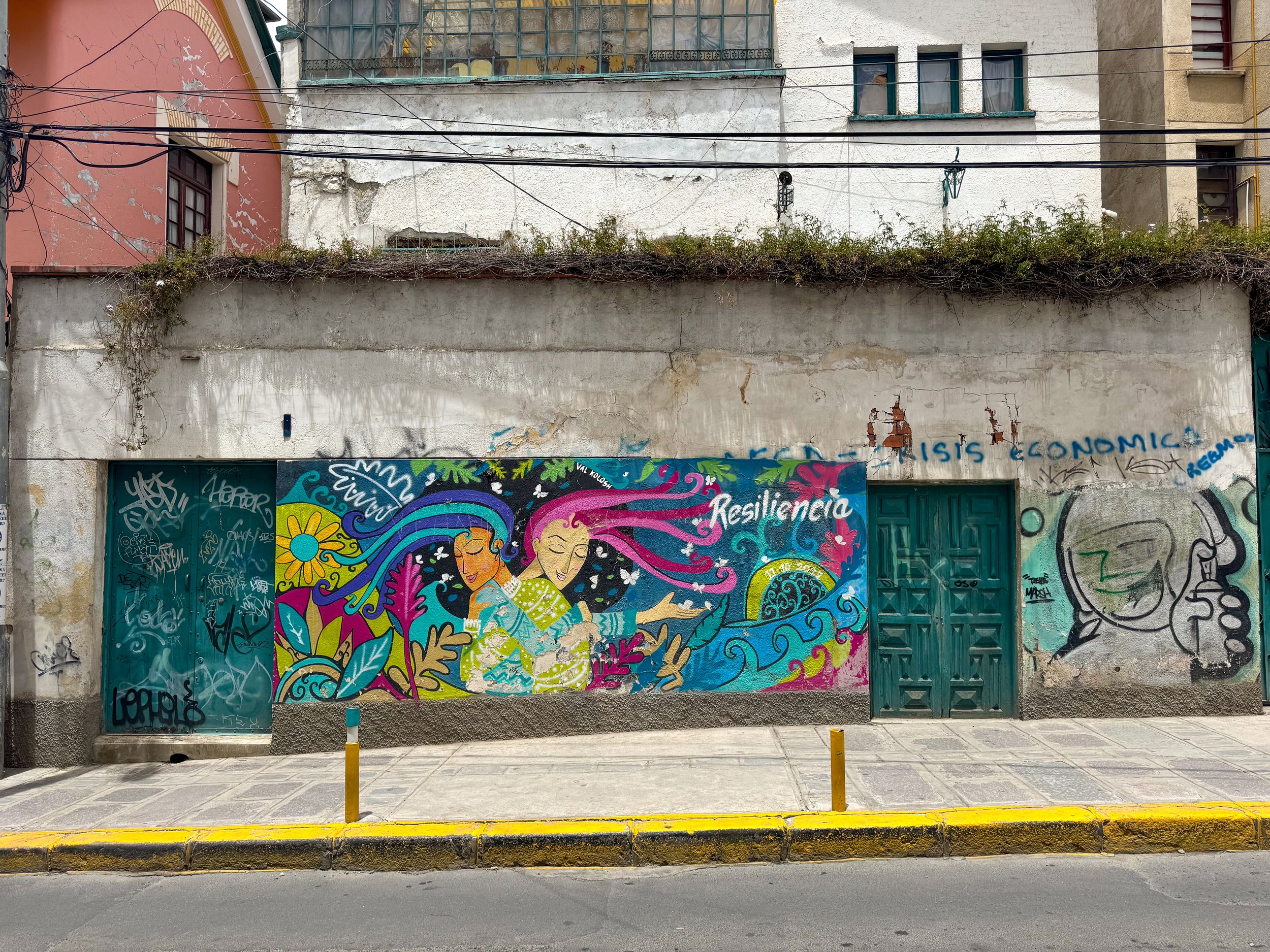
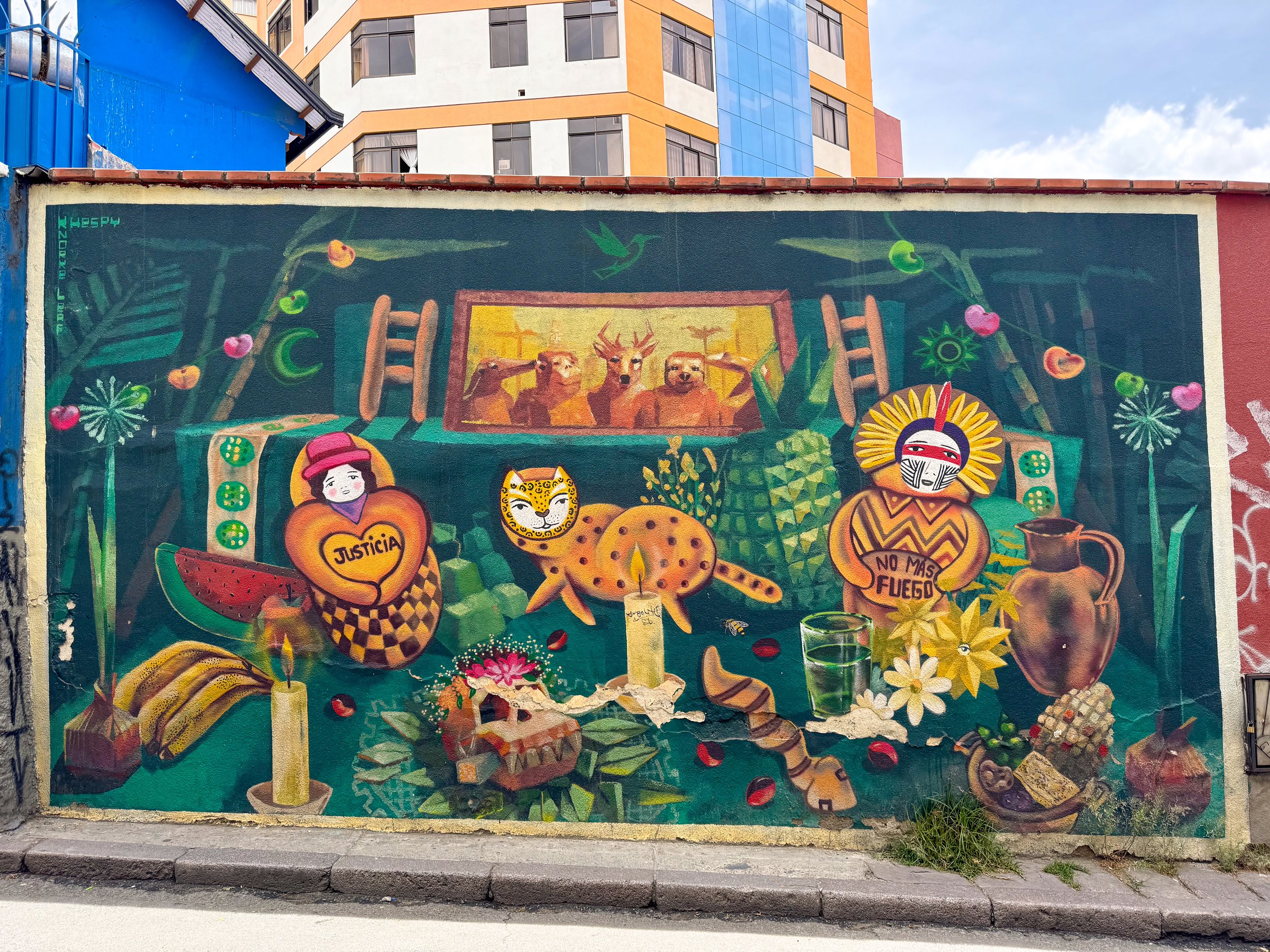
Neighborhoods
Barrio Sopocachi. A bohemian and artsy neighborhood with murals, small parks, cafes & bars. It’s quieter and removed from the central neighborhood.
El Centro. The historic center of La Paz with museums, government buildings, colonial architecture and markets.
Chualluma. A hilly neighborhood with buildings and steep staircases painted in vibrant and pastel colors. It’s viewable on red teleferico line from the Central Station.
Calacoto. A high end residential and business district at the lower end of the La Paz Valley with elegant homes and towering glass skyscrapers.
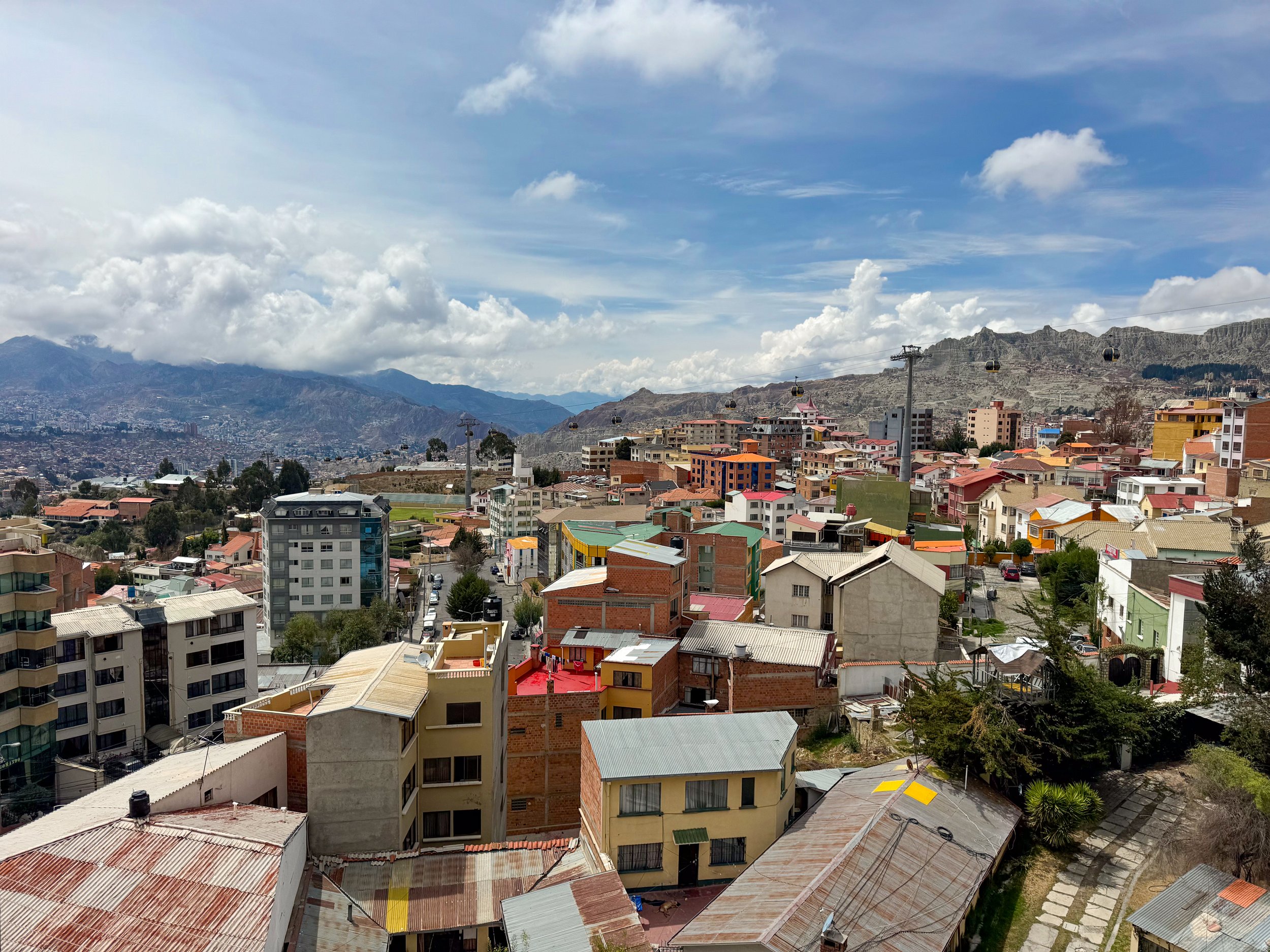
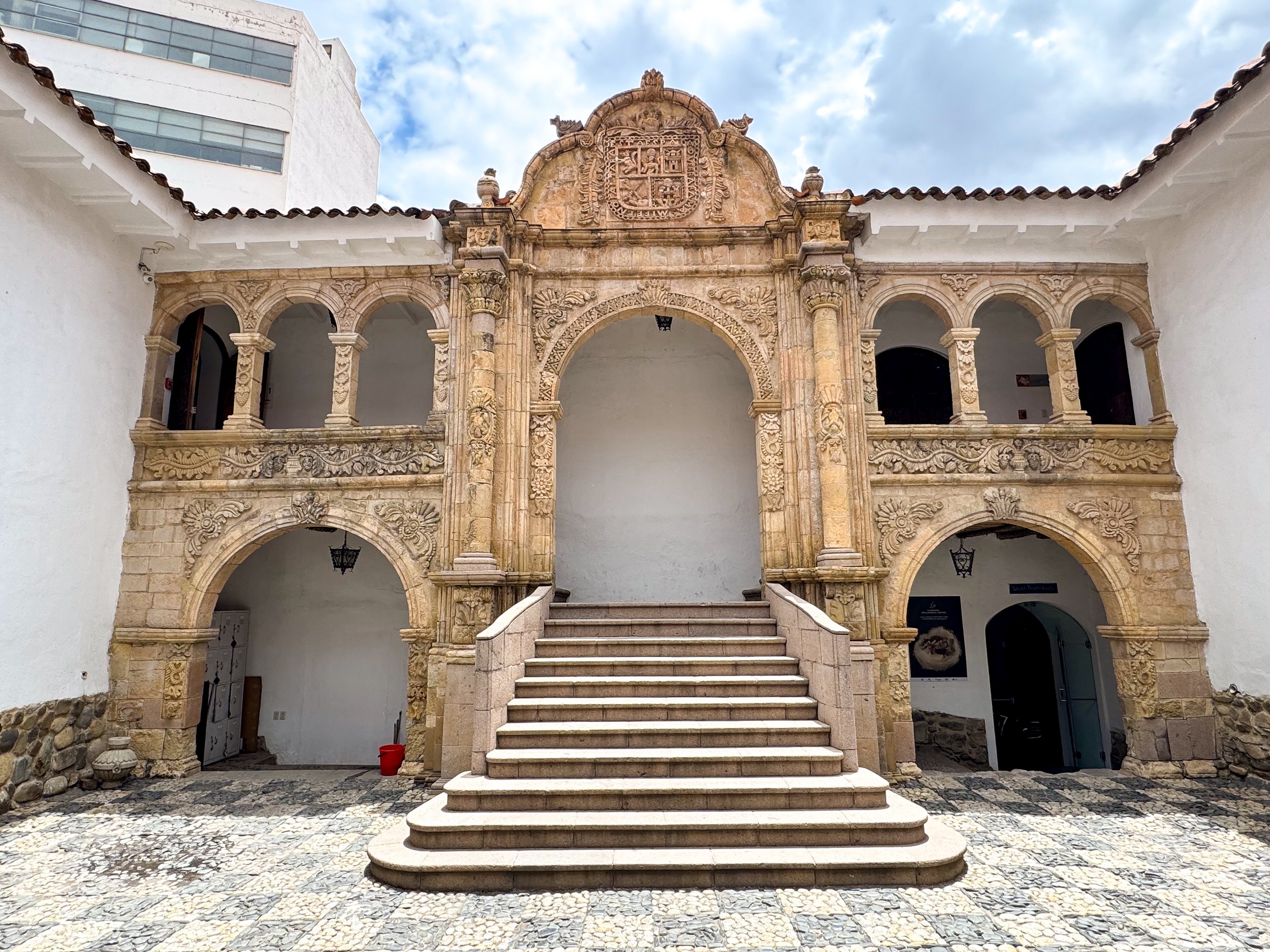
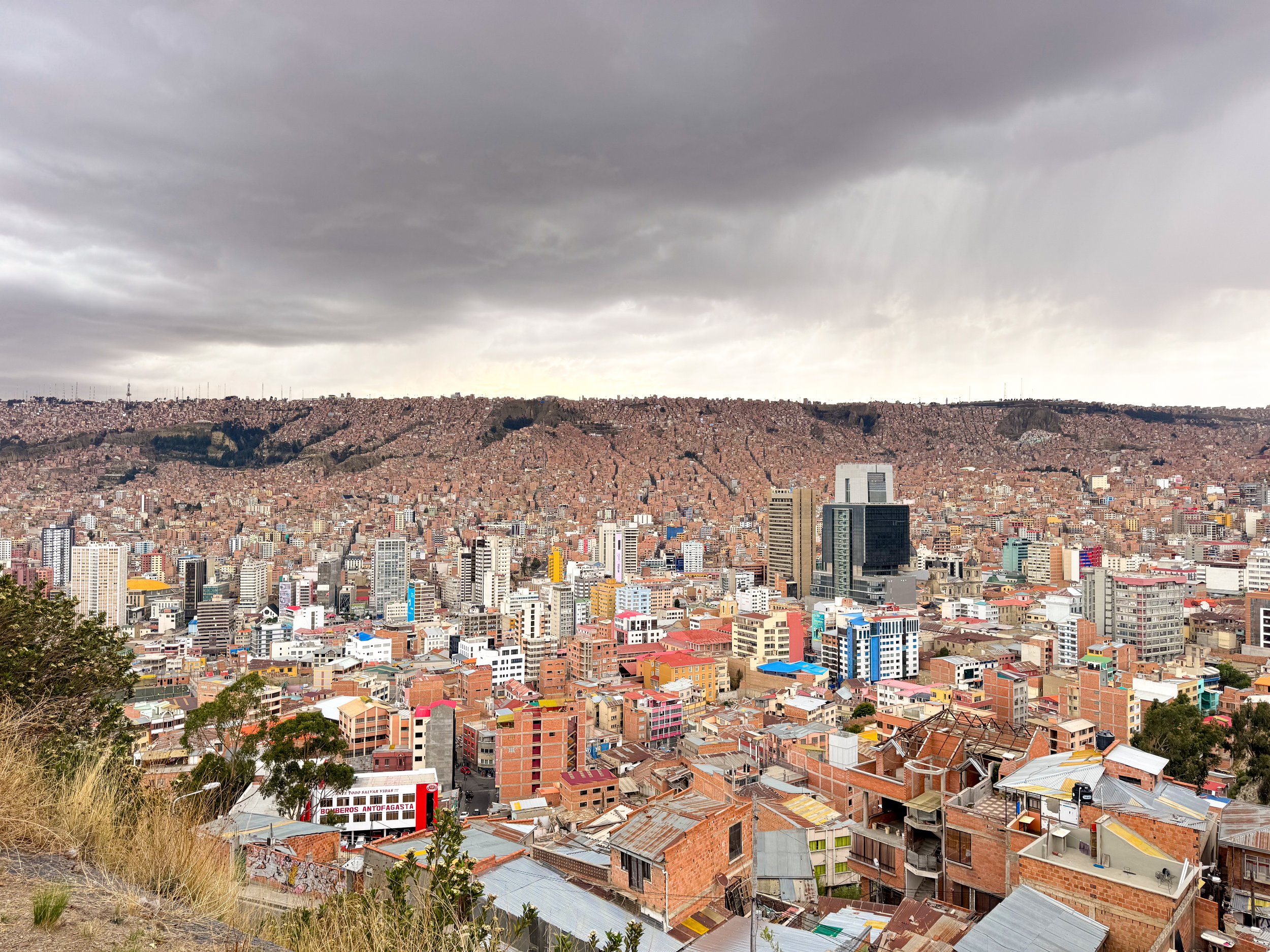
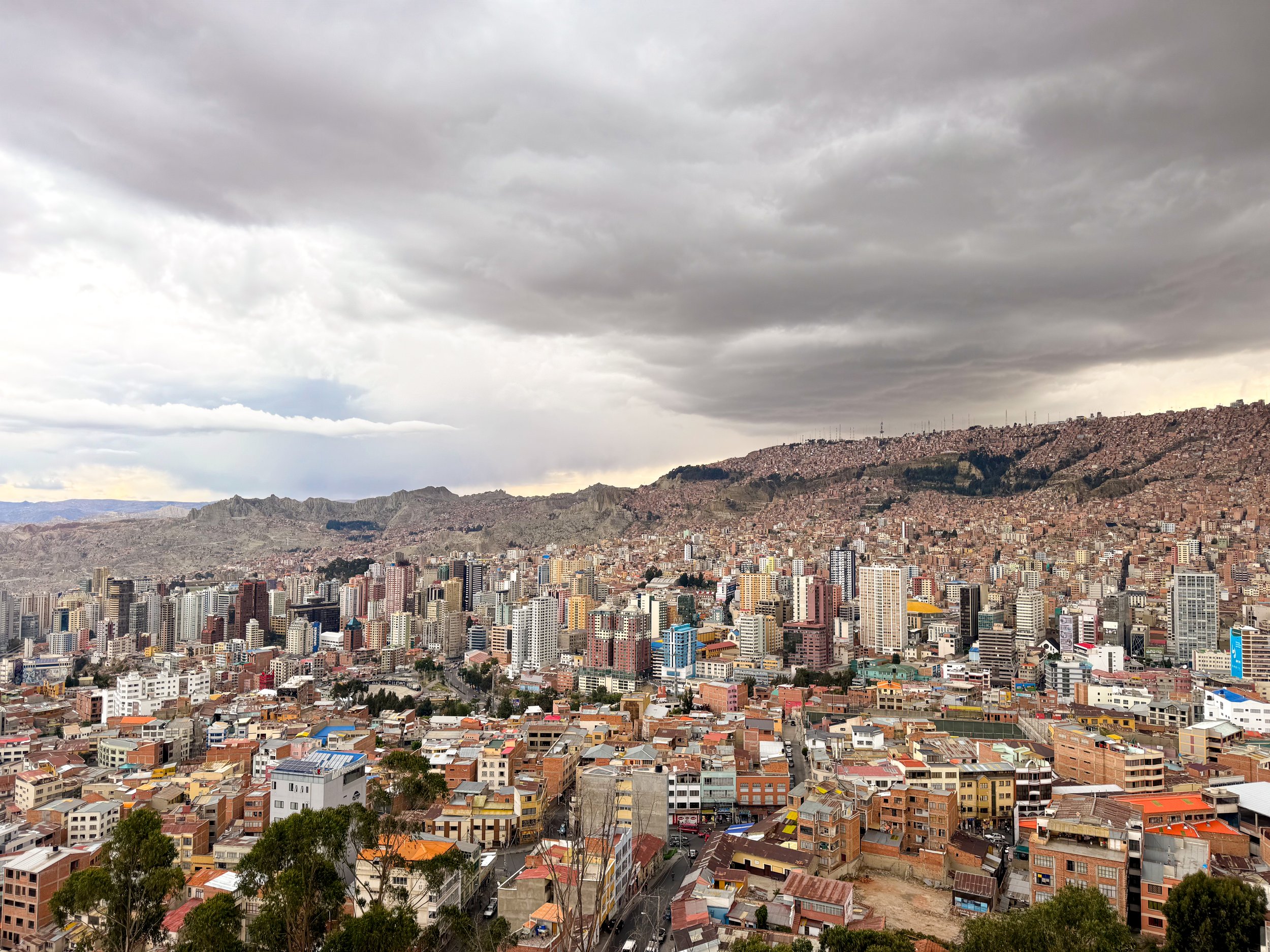

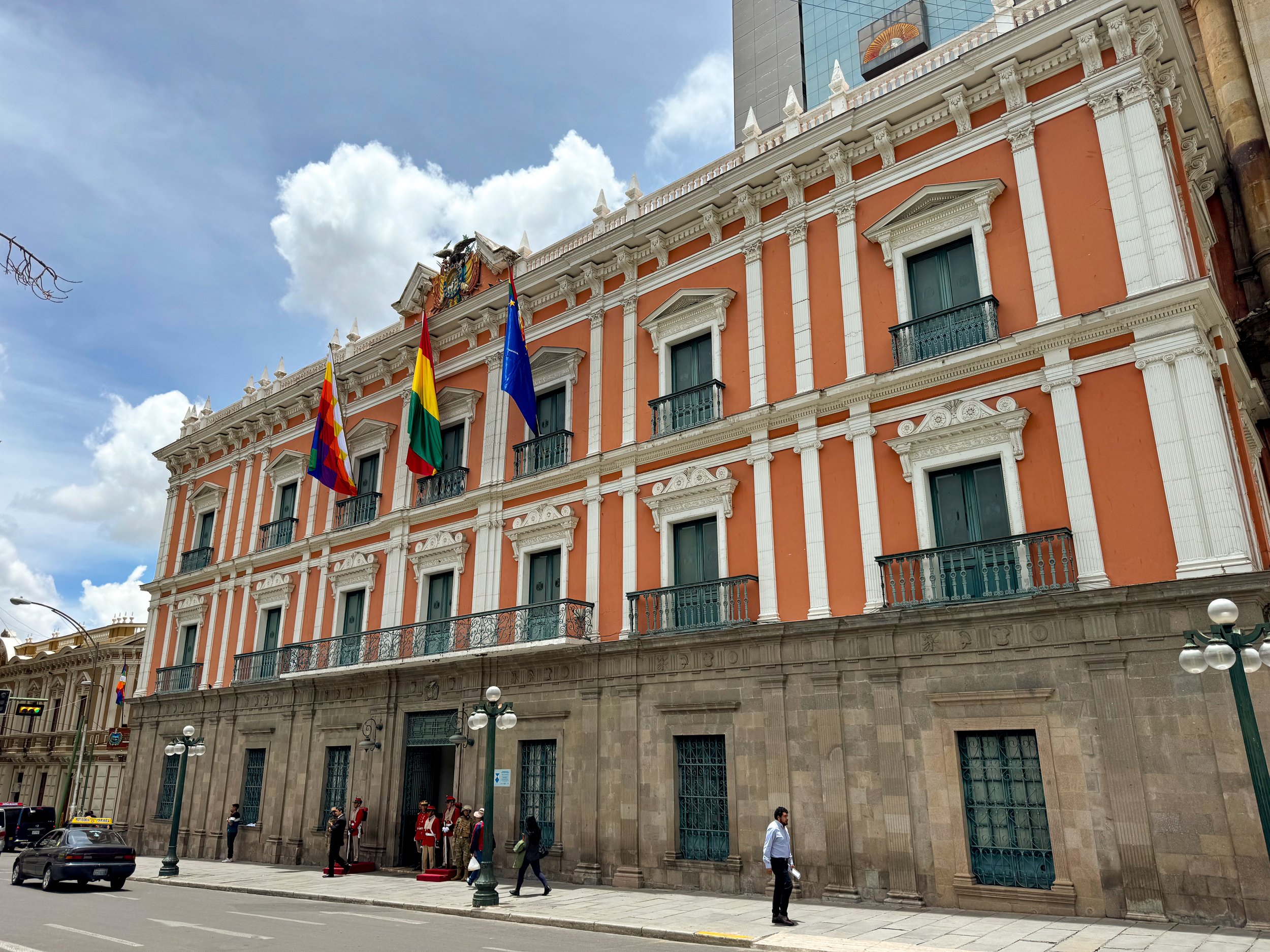
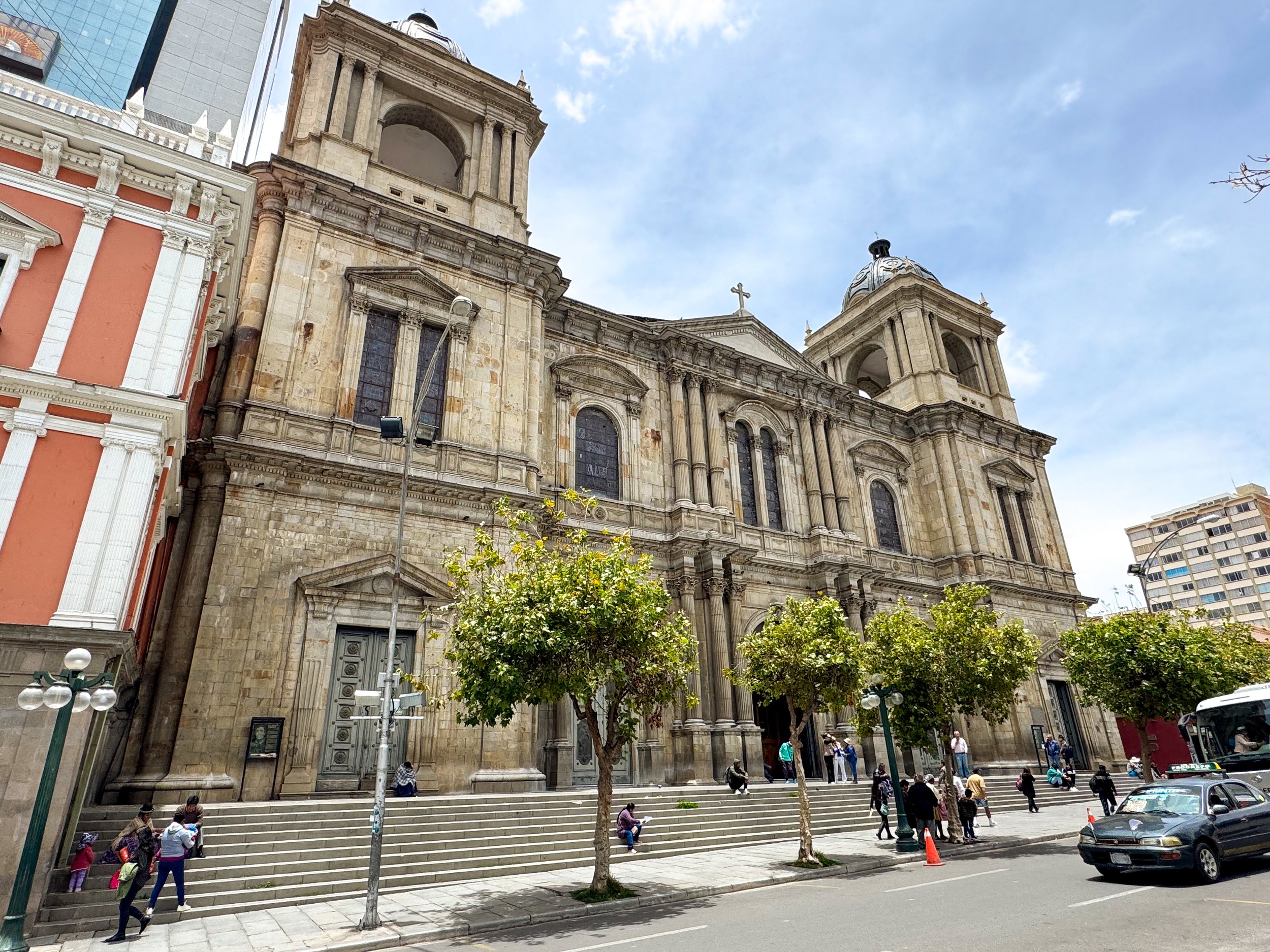
Sights & Museums
Mirador Killi Killi. A lookout in the middle of La Paz with views of the valley and sprawling city crawling up the mountainsides.
Montículo. A peaceful park and lookout in the middle of Barrio Sopocachi with views of the neighborhood, modern skyscrapers, teleferico and mountains.
La Plaza Murillo. A central plaza surrounded by stately buildings flying the Bolivian and Andean flags with a large population of pigeons. Notable buildings include:
The Presidential Palace. A stone and red painted building patrolled by military police presidential guard.
Legislature. A neoclassical building with white marble columns and a backwards clock representative of political change.
Basilica of Our Lady of Peace. A Renaissance style stone cathedral.
The National Museum of Ethnography & Folklore. A museum with exhibits on the use of natural resources by indigenous Bolivians. The exhibits showcase artifacts including ornate textiles, clothing and hats, elaborate feathered headdresses and totems, colorful Indigenous masks, ceramics and metalwork
Plaza Abaroa. We stumbled upon this plaza while wandering through Barrio Sopocachi. At the time, it had a market with vendors selling textiles, jewelry and clothes. We bought crossbody bags embroidered in Bolivian textiles.
Calle Jean. A cobblestone street with colorful colonial buildings, art galleries, small museums and souvenir shops.
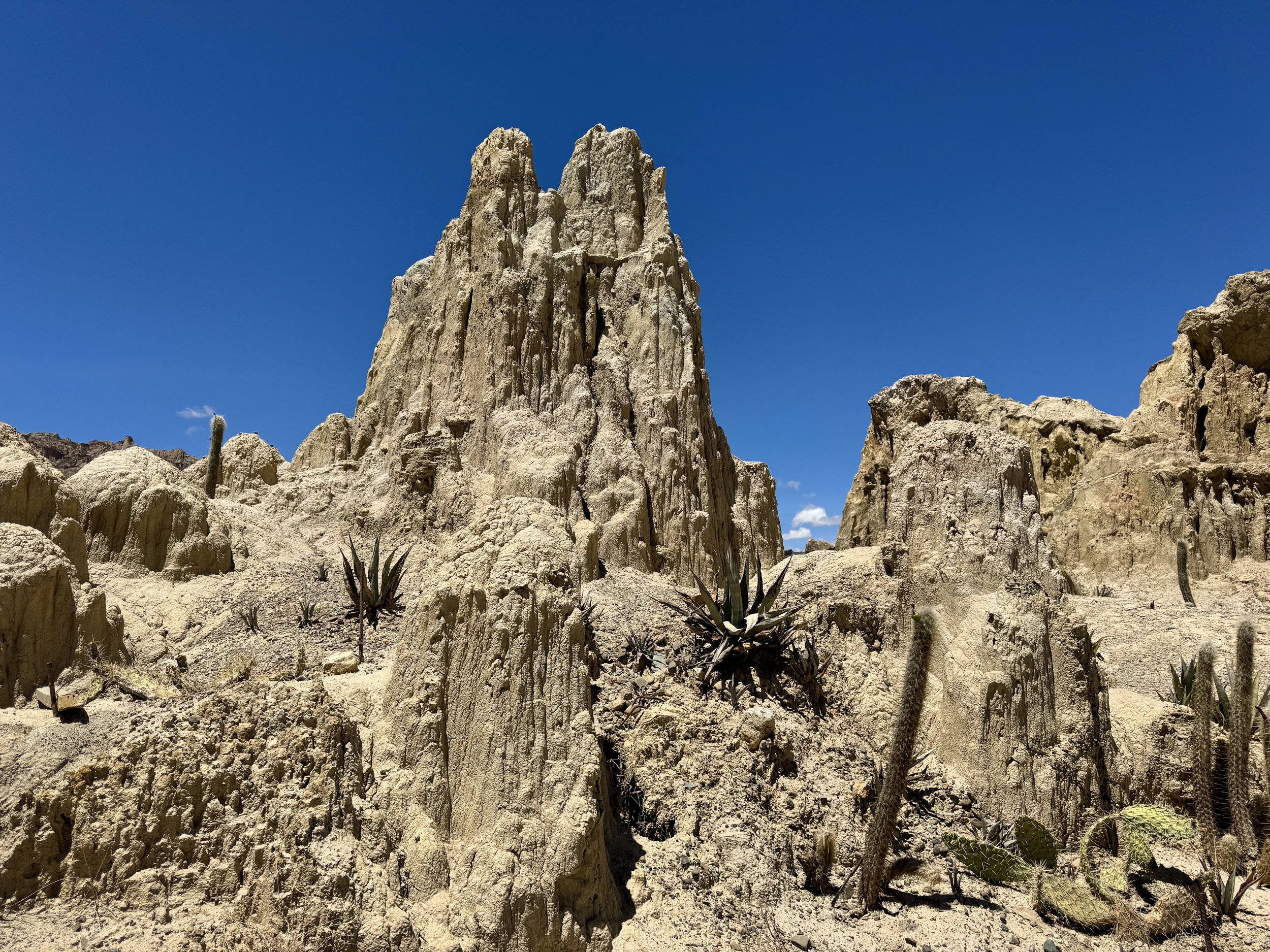

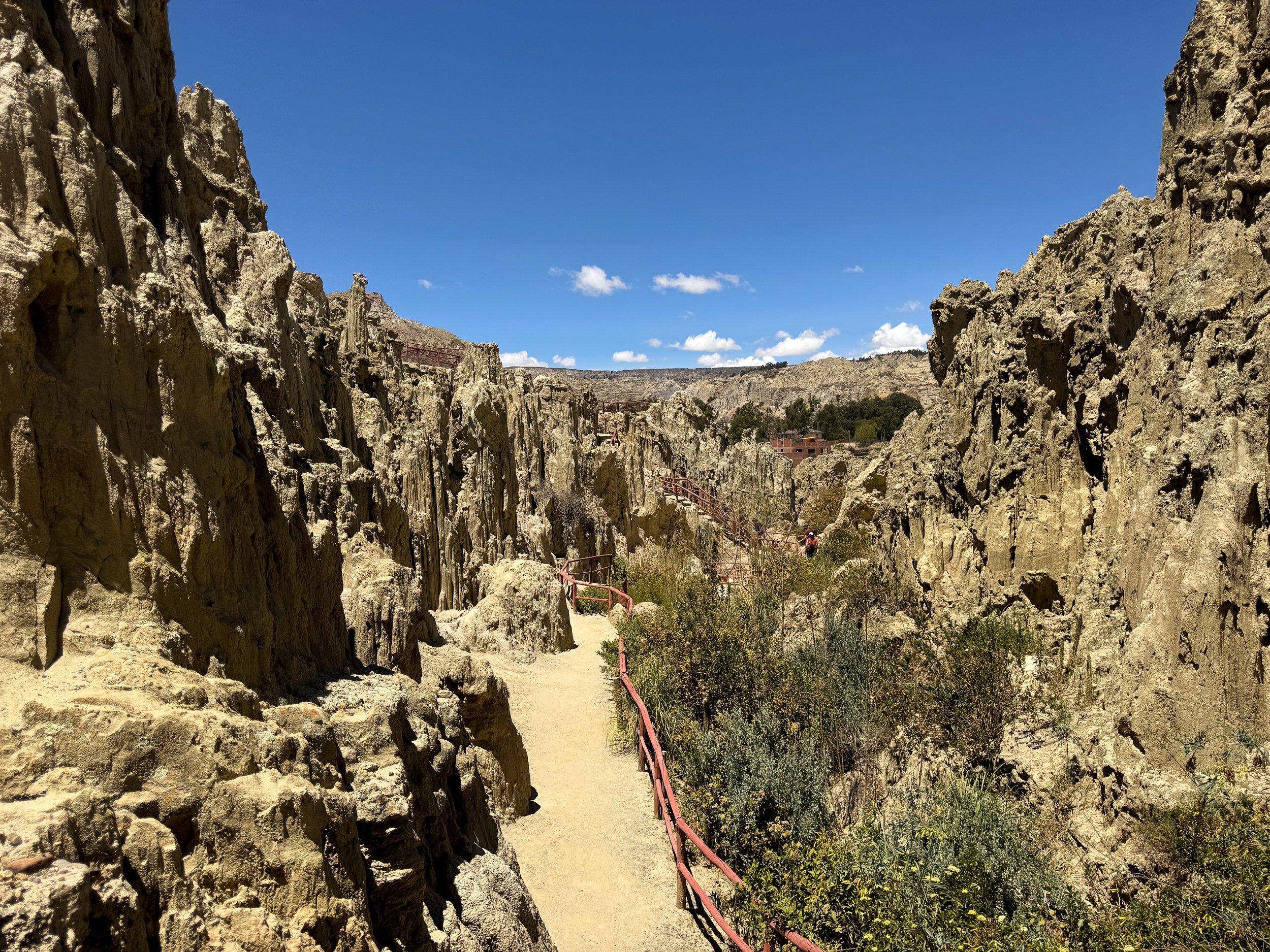
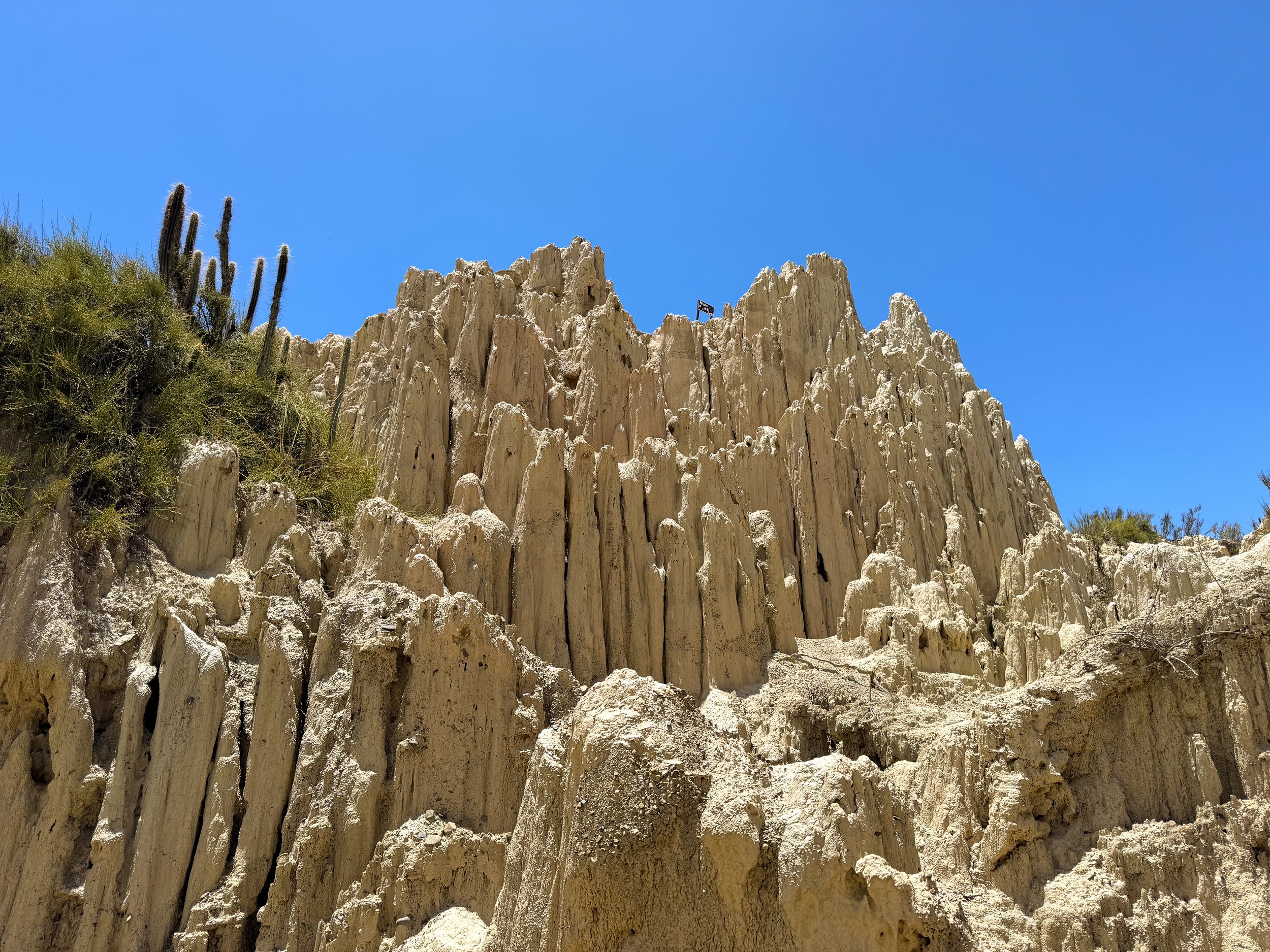
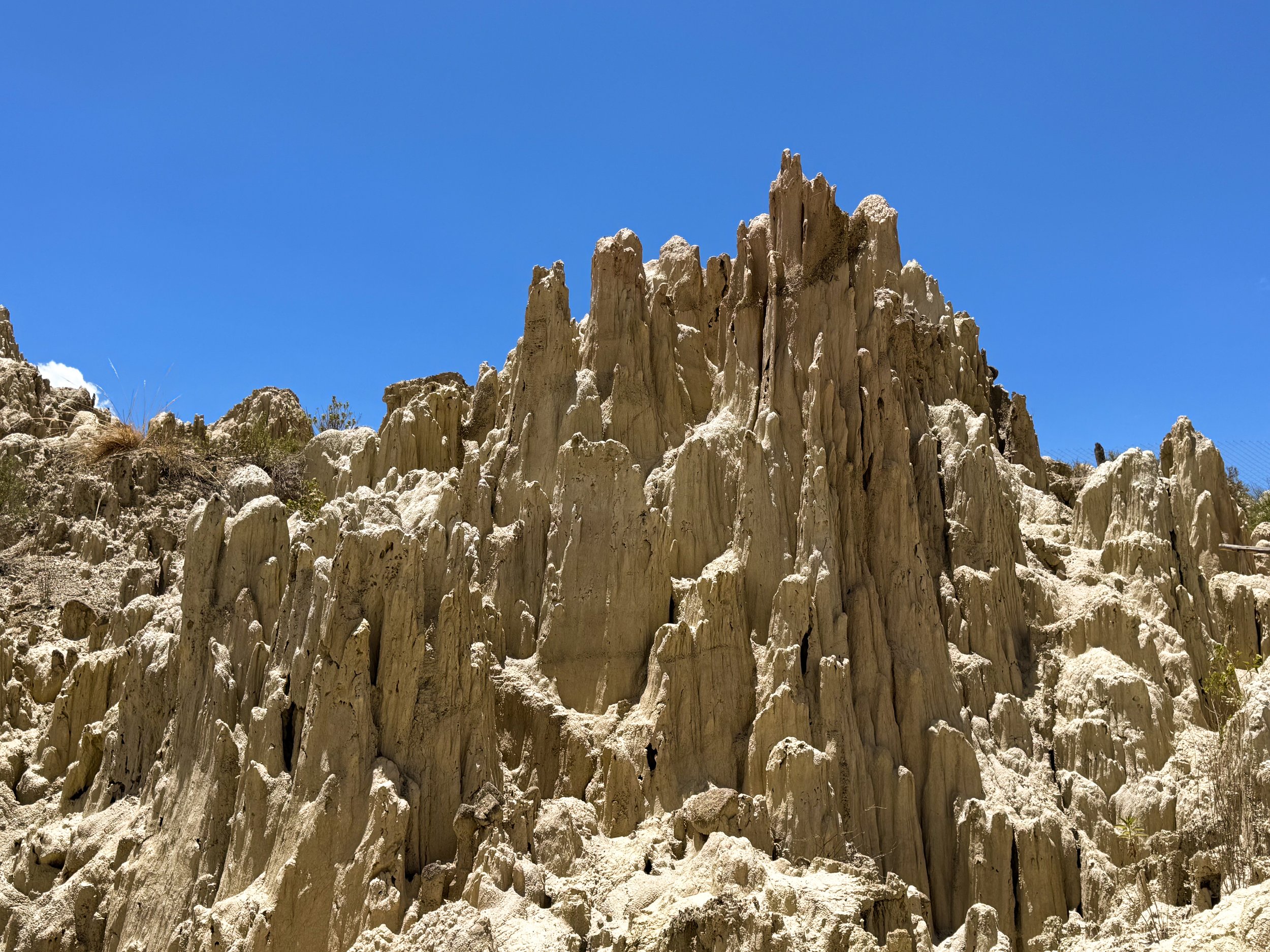
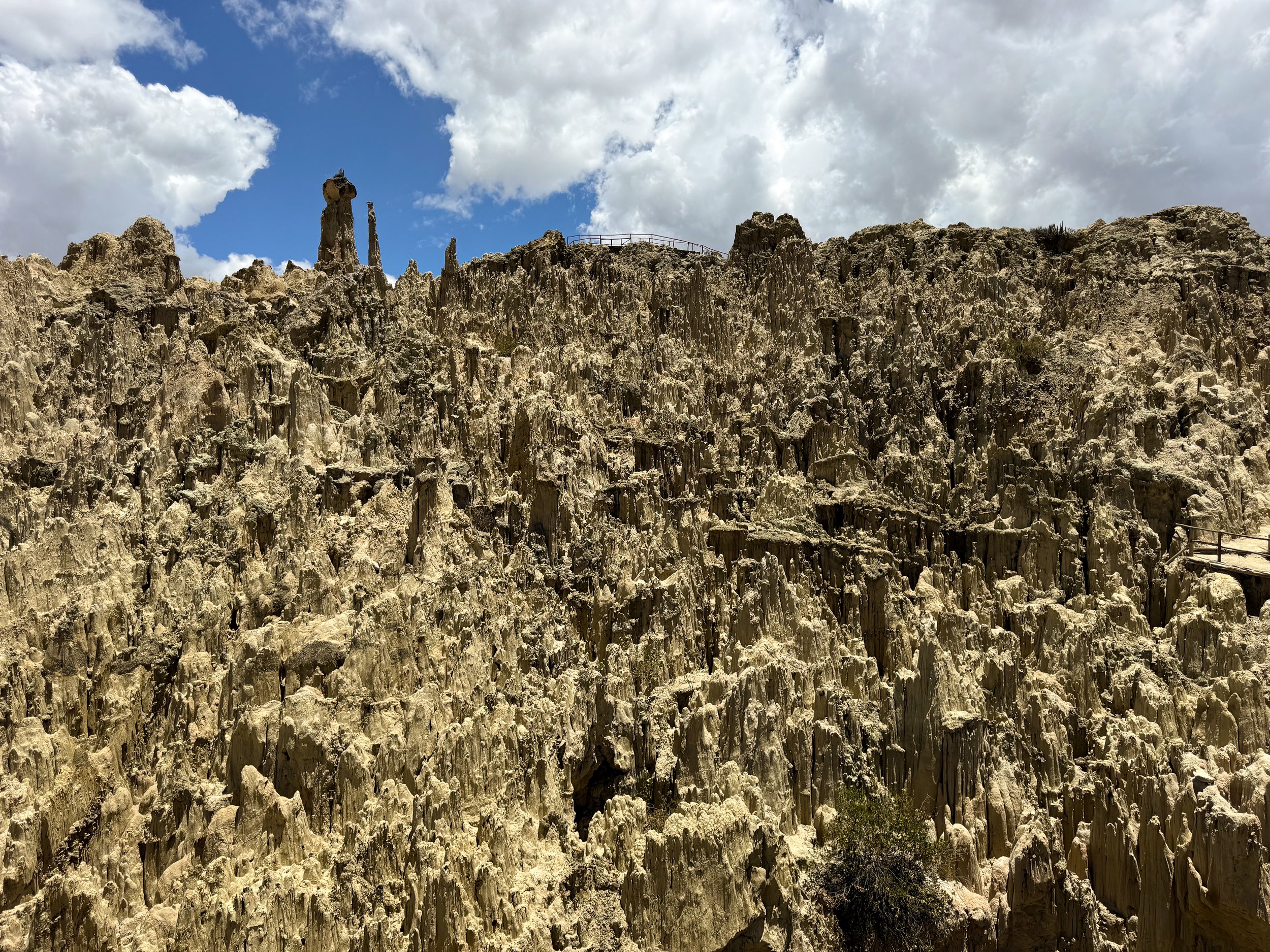
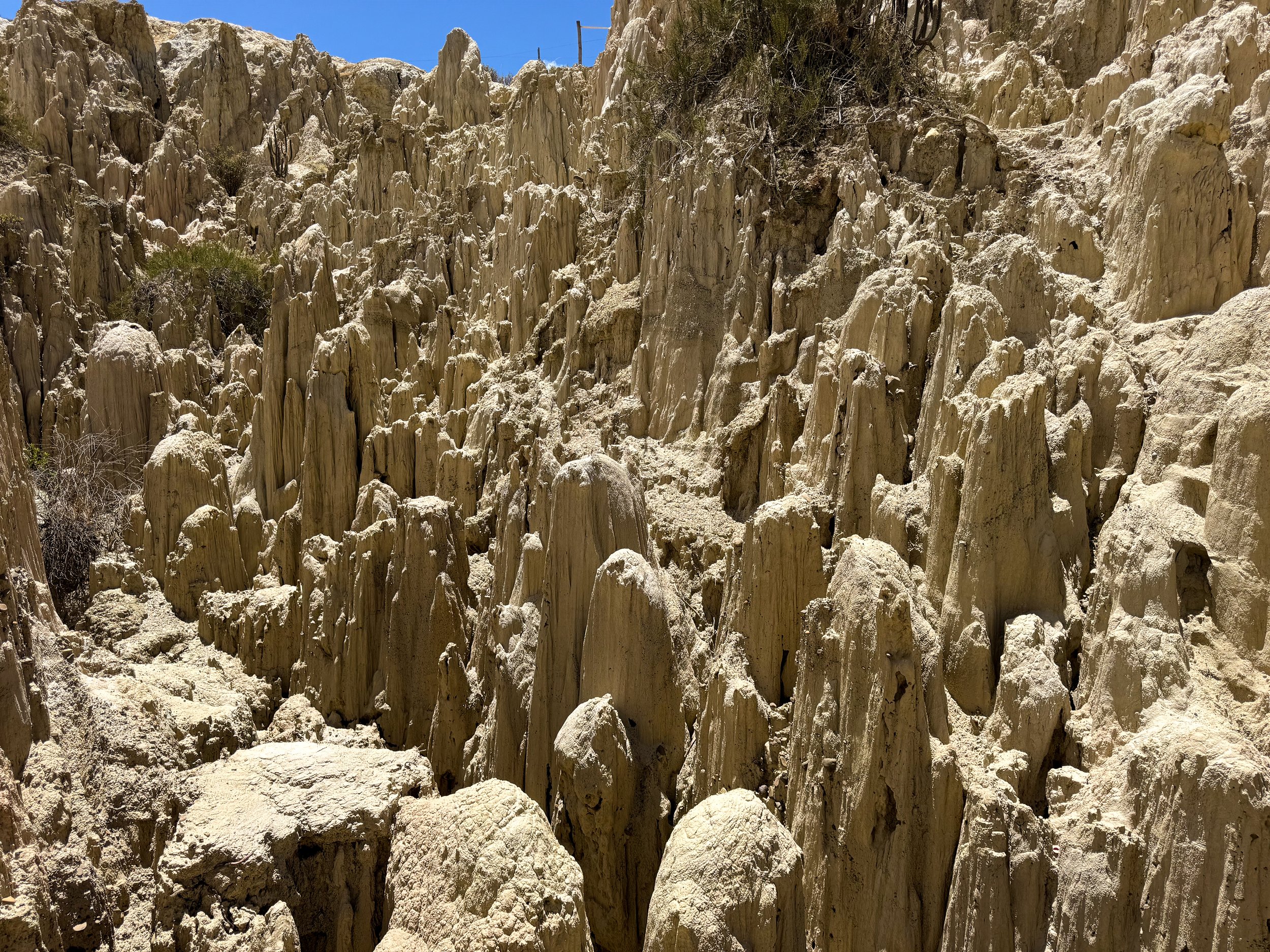
Vallee de la Luna. A nature park just outside of La Paz with trails leading through an otherworldly desert landscape created by eroding rock pillars and jagged geological formations.
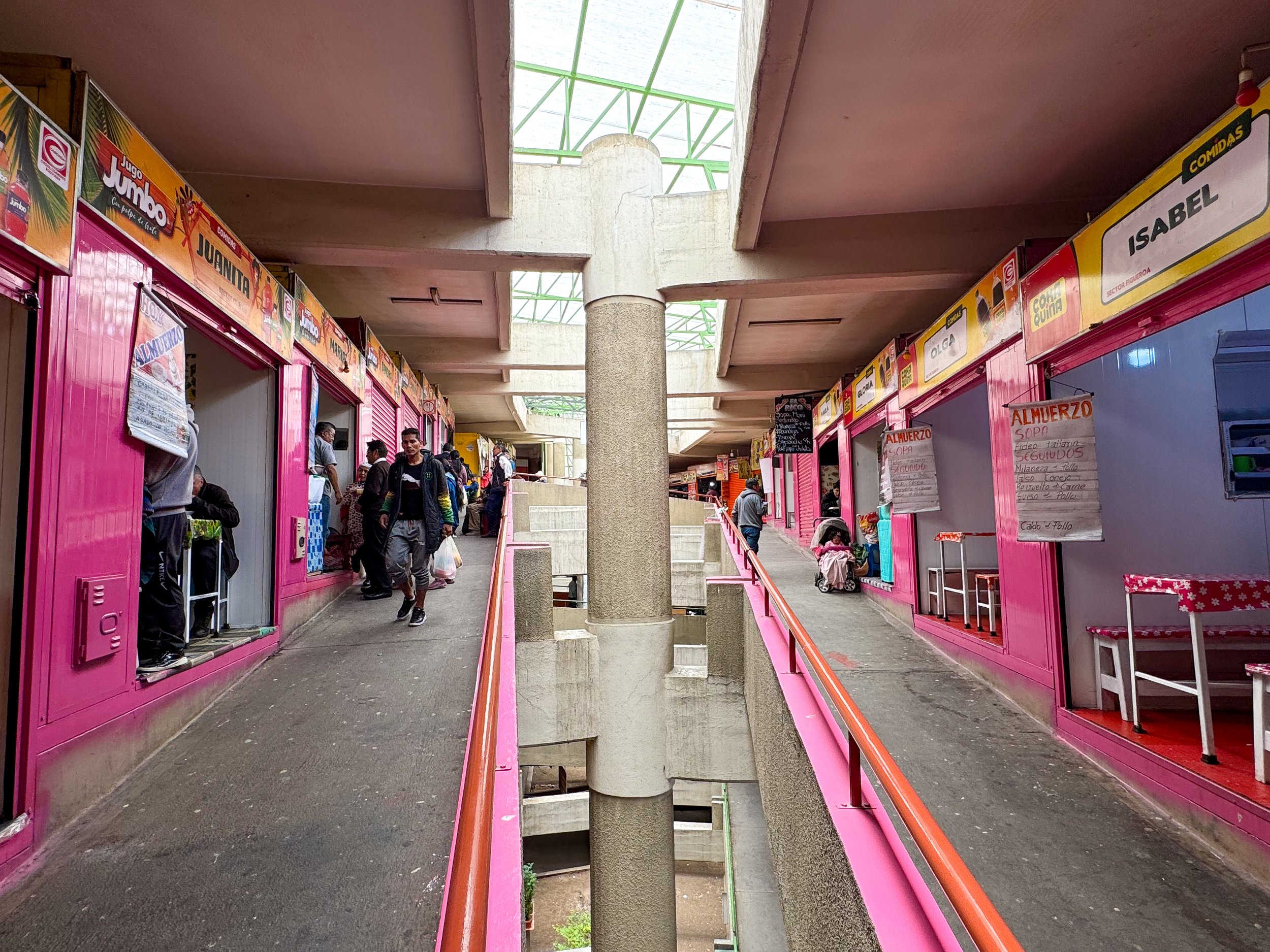
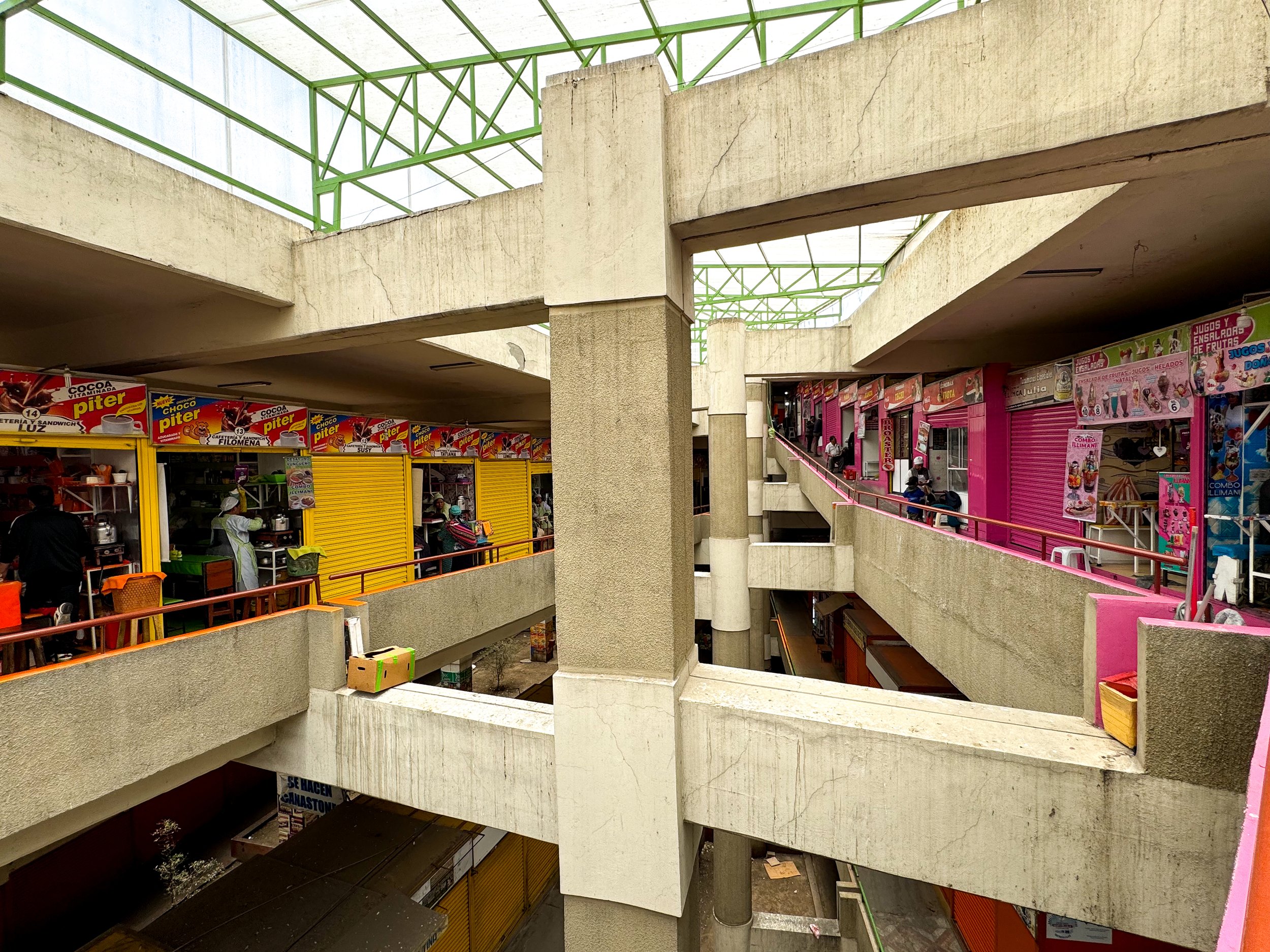
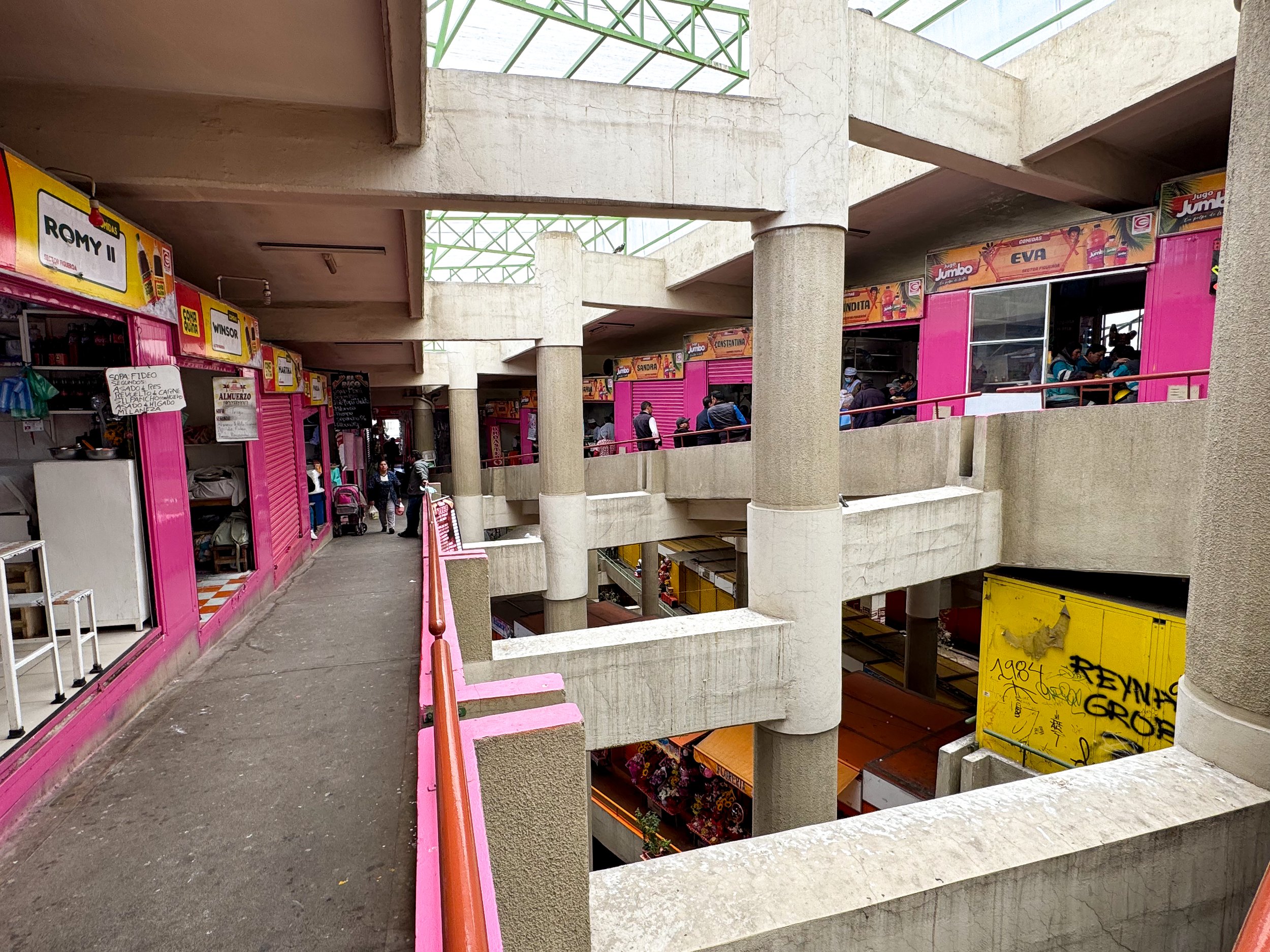
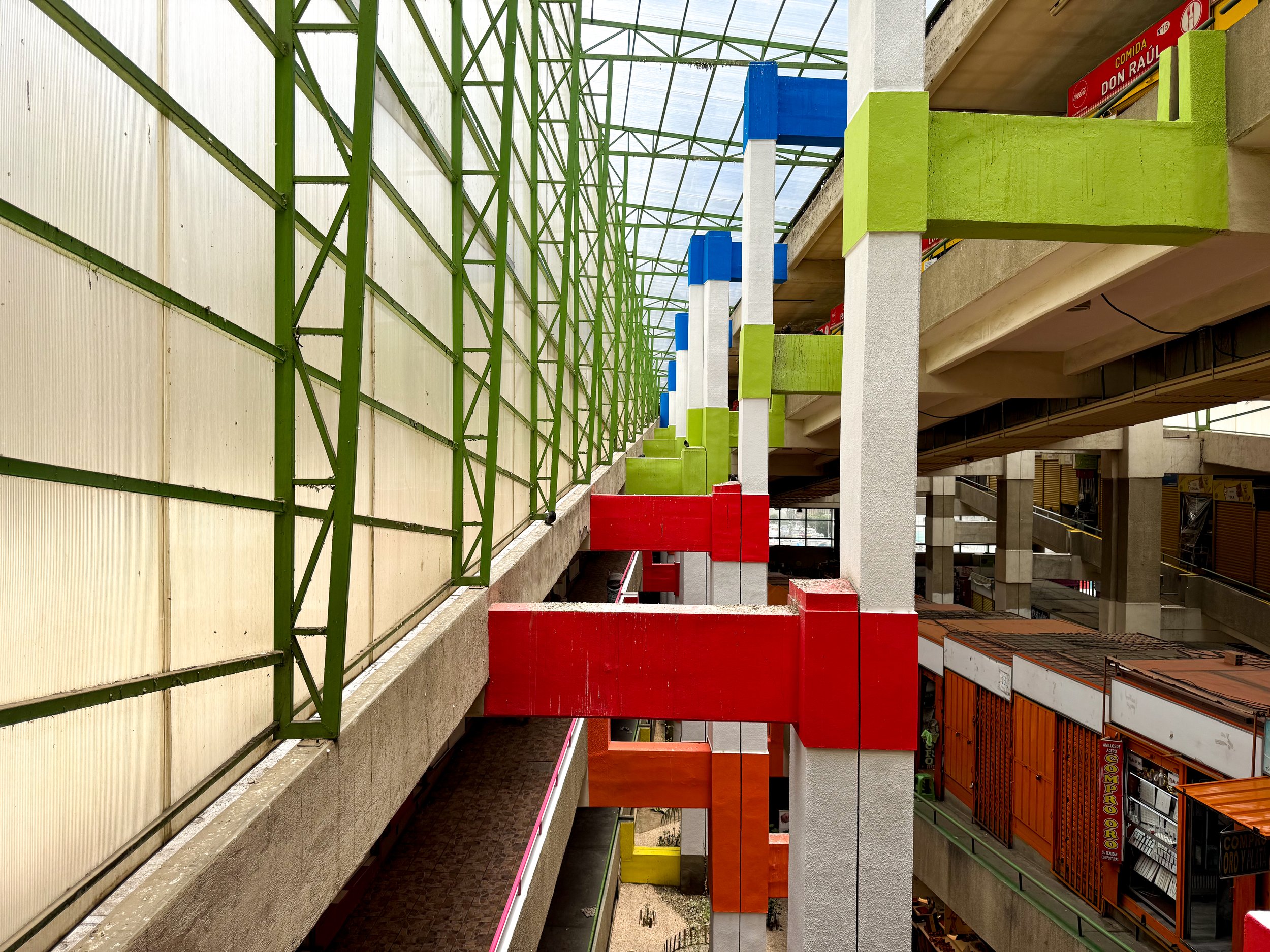
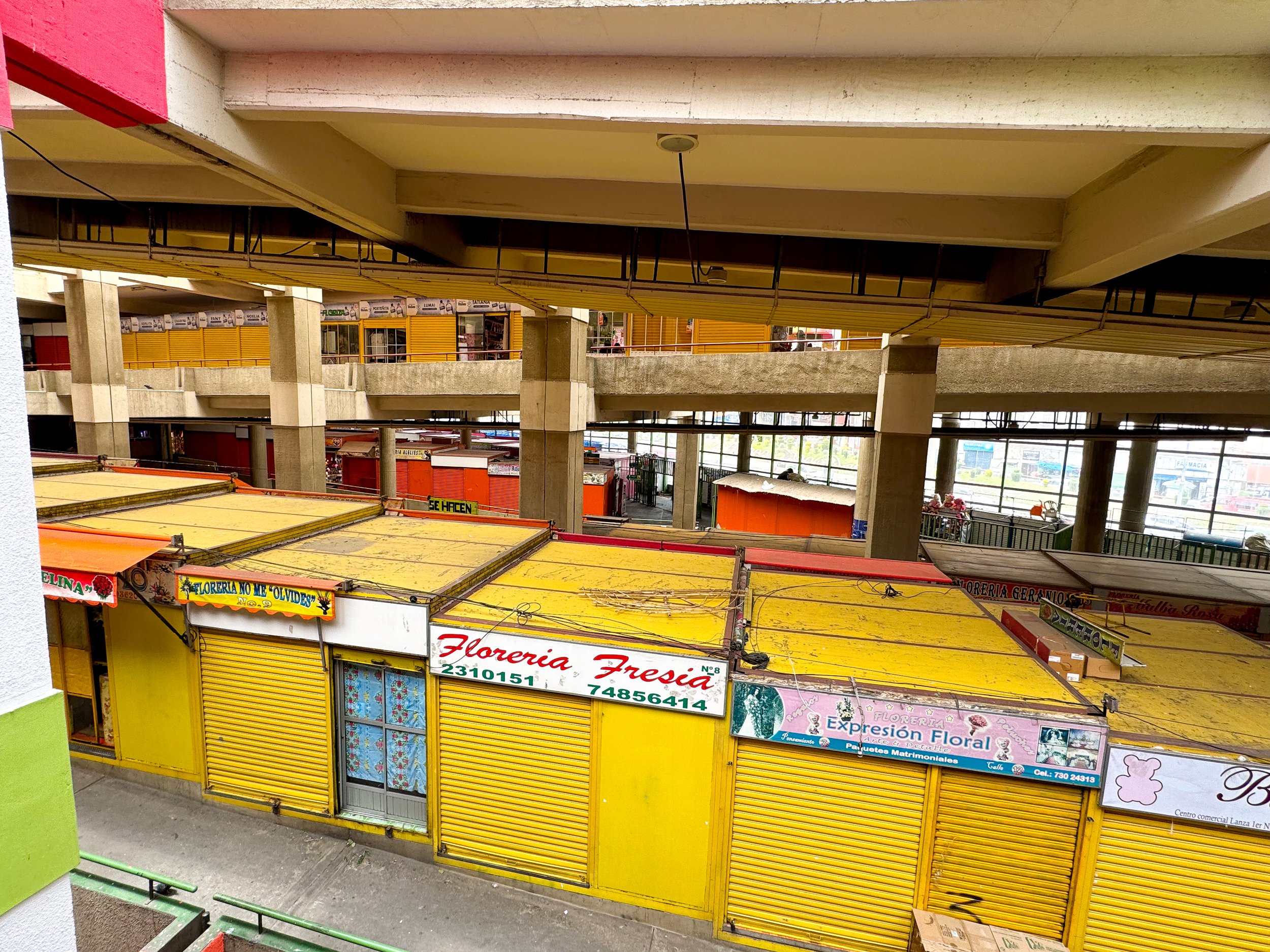
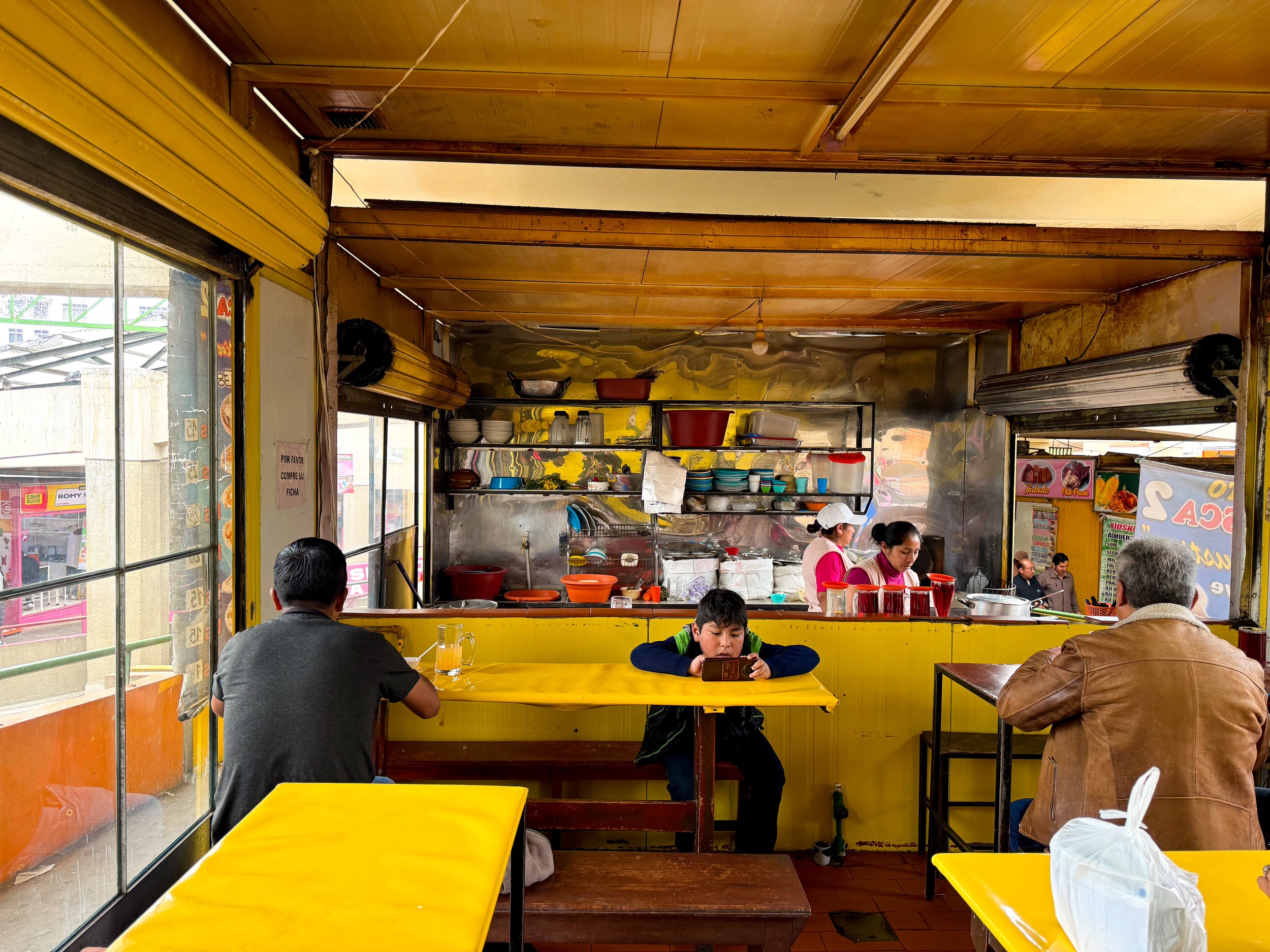
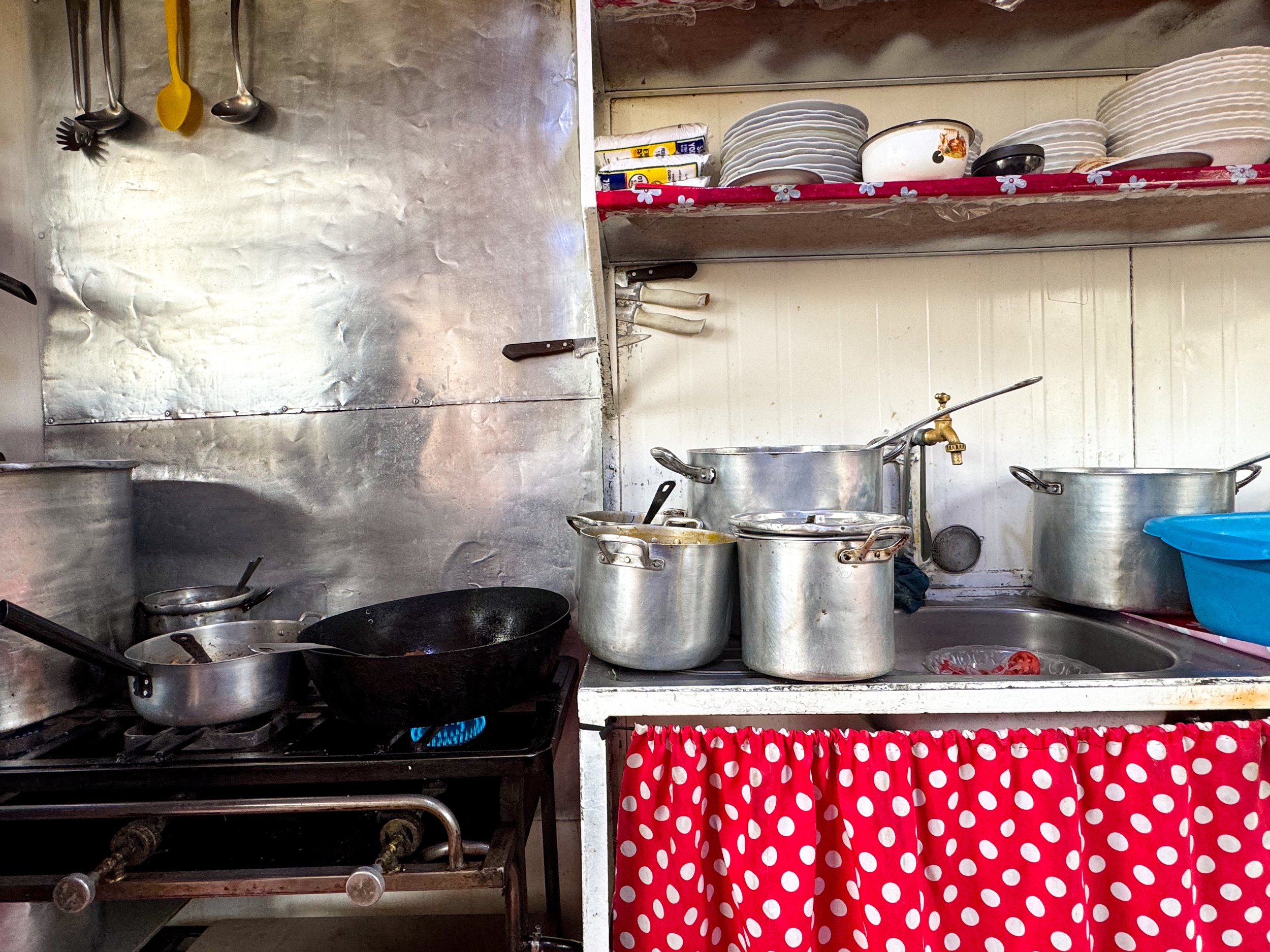
Markets
La Paz has numerous markets across the city in almost every neighborhood. We visited three to shop for grocery’s, eat street food and look for handicrafts.
Mercado Lanza. A maze like market in a brutalist building with levels of intertwining ramps of vendors selling all kinds of inexpensive meals and juices. We wandered between sections as cooks called us into their nooks until finally stopping to eat. We sat down at one vendor’s kitchen for Sopa de Mani (peanut soup) and another for fried Mauri (an Andean fish).
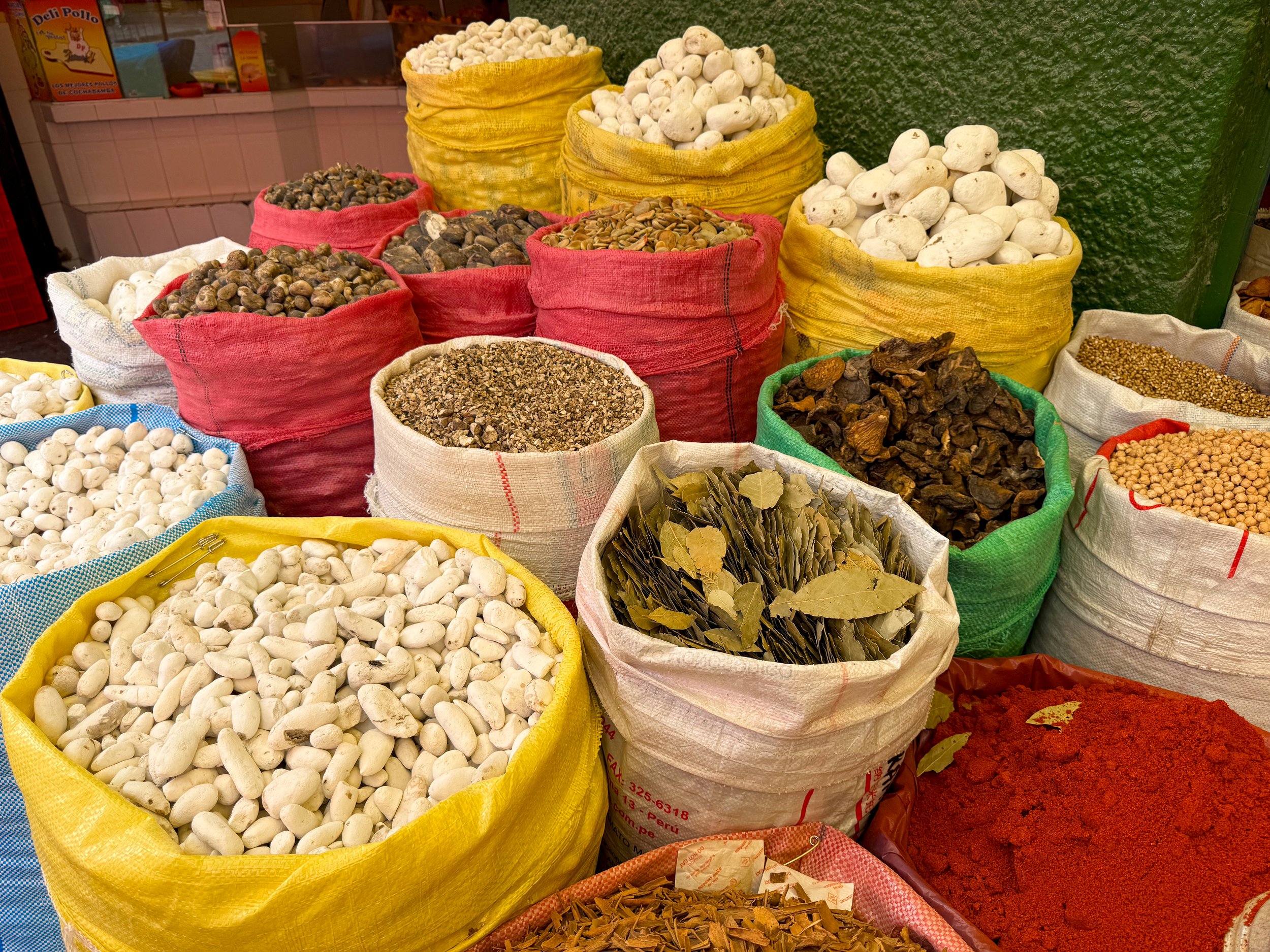
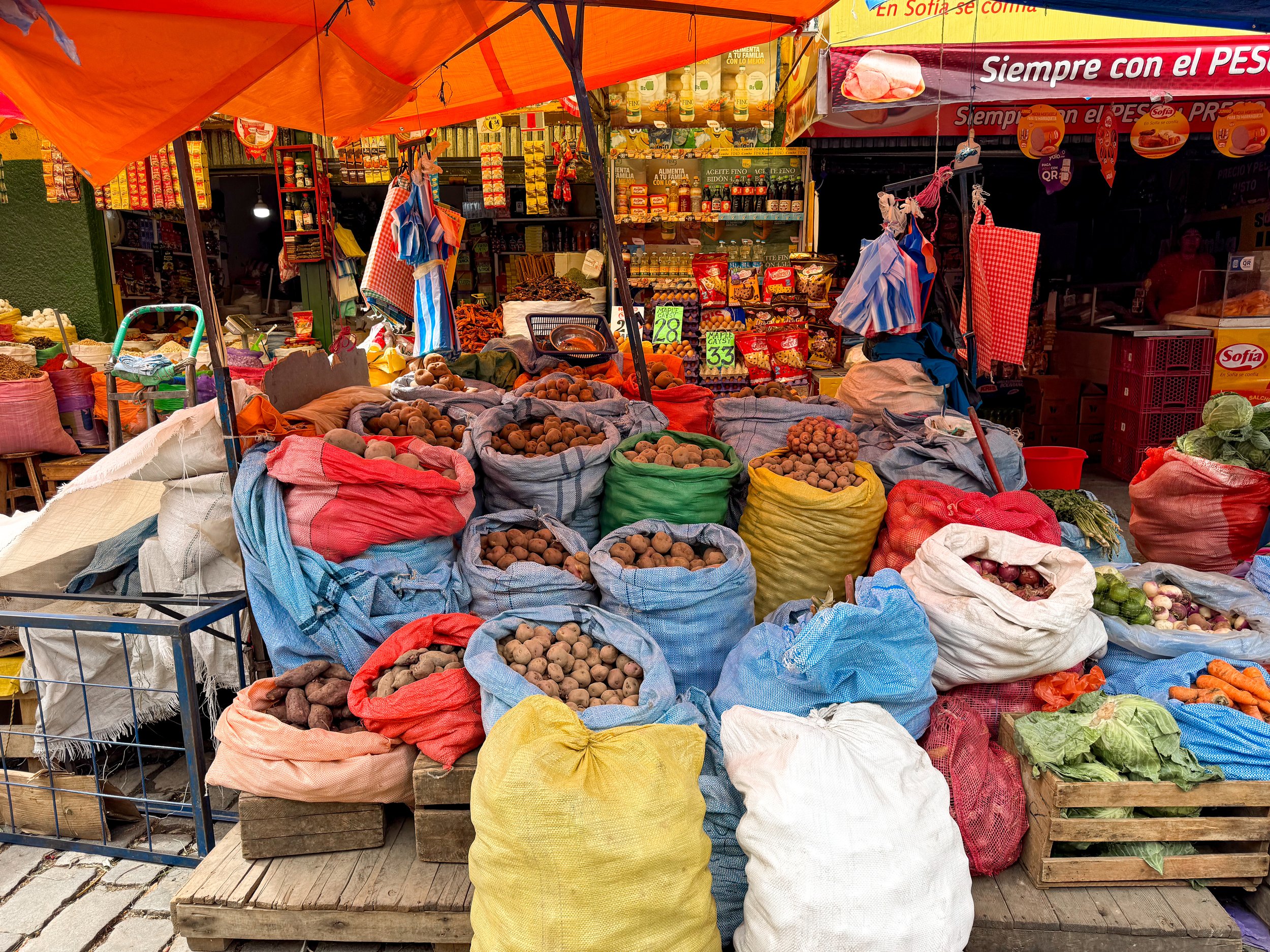
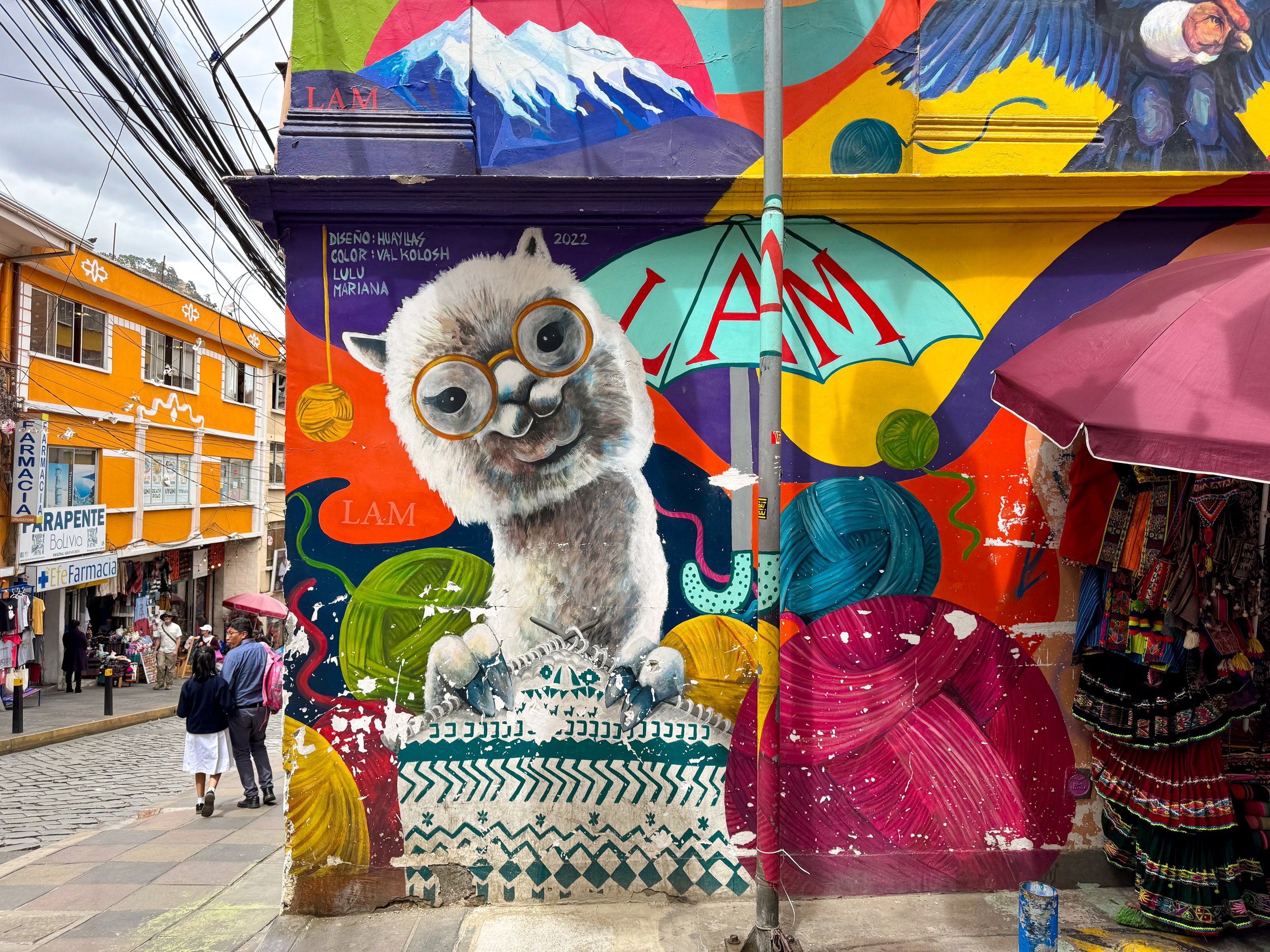
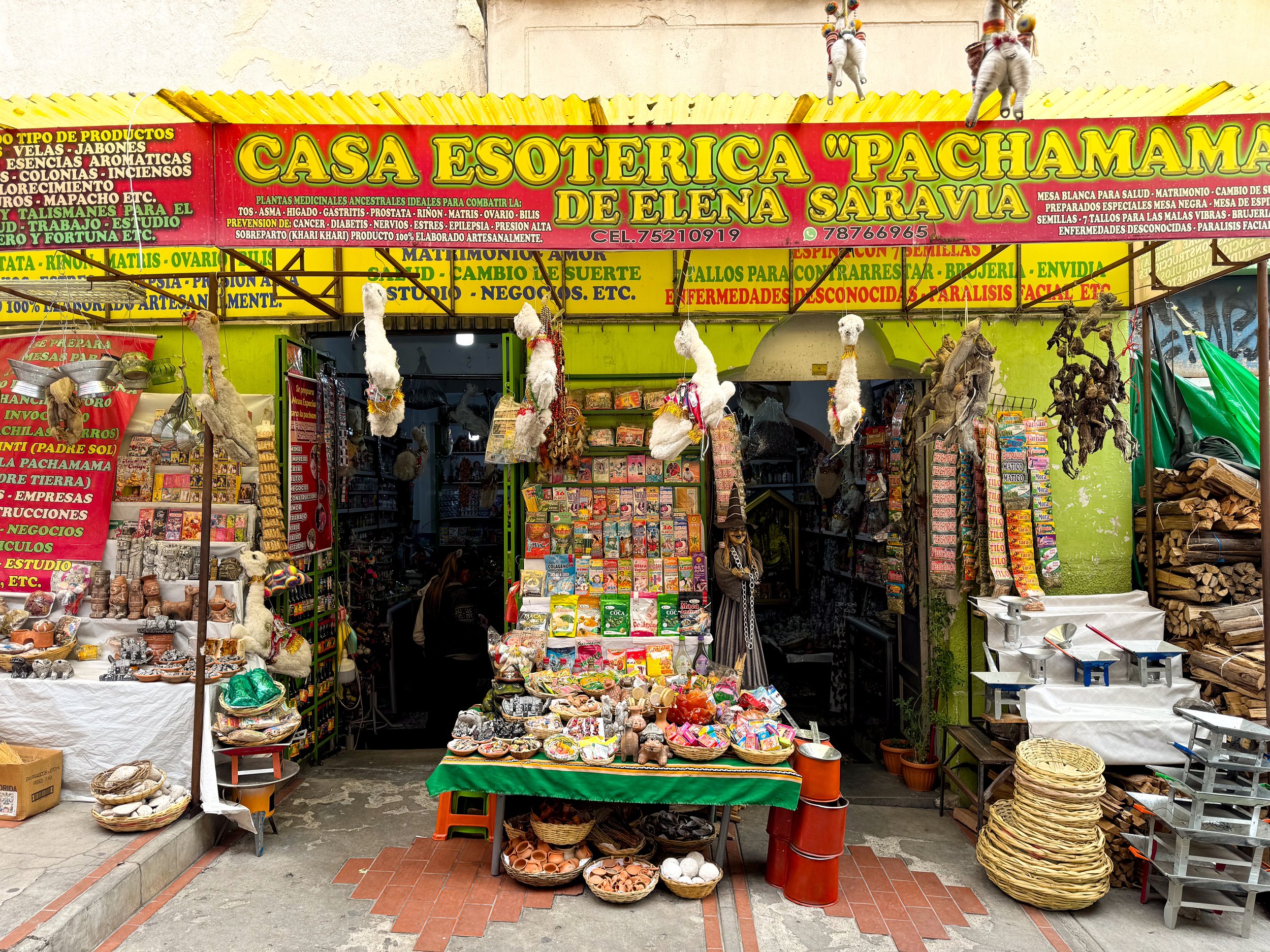
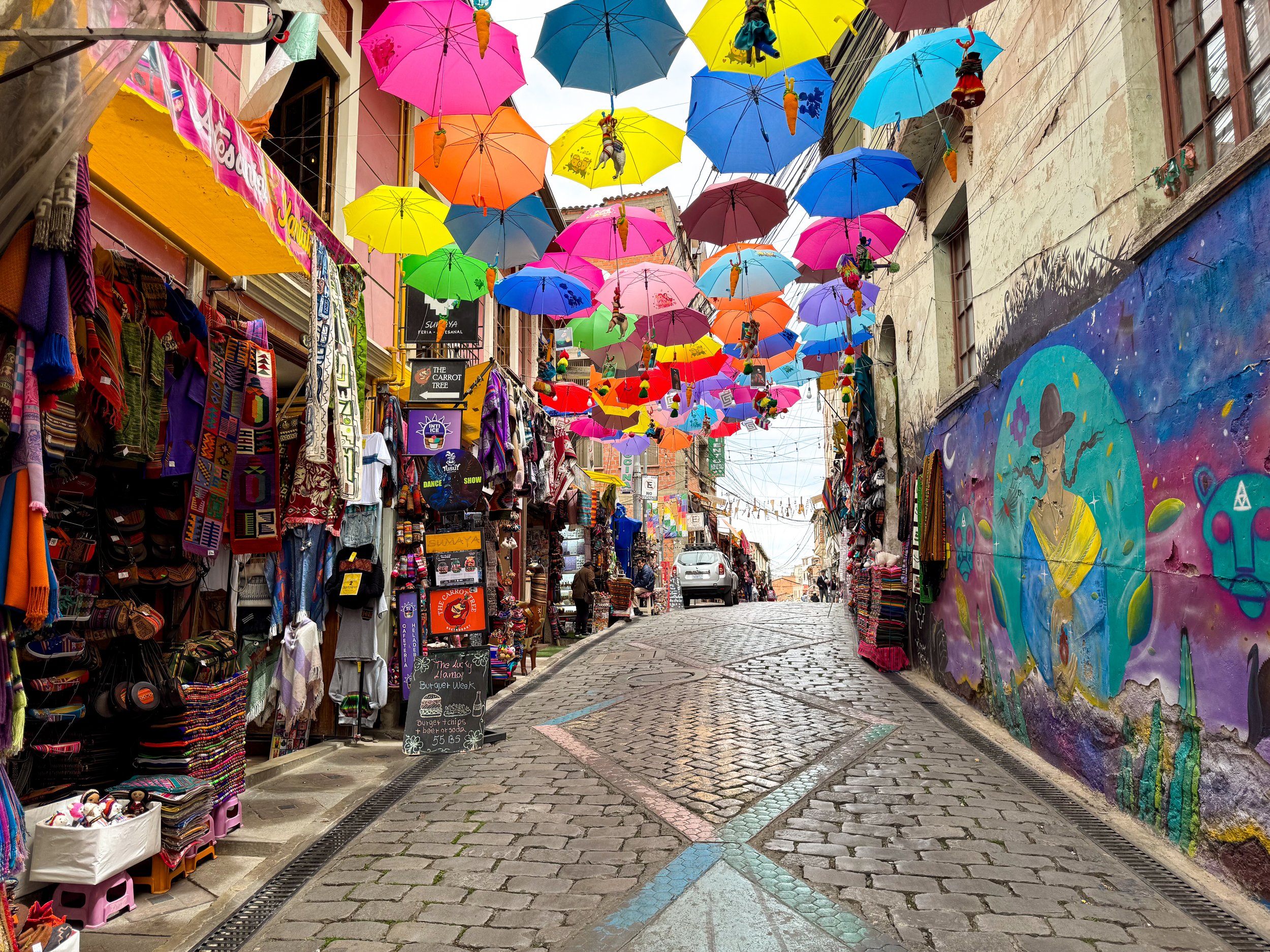
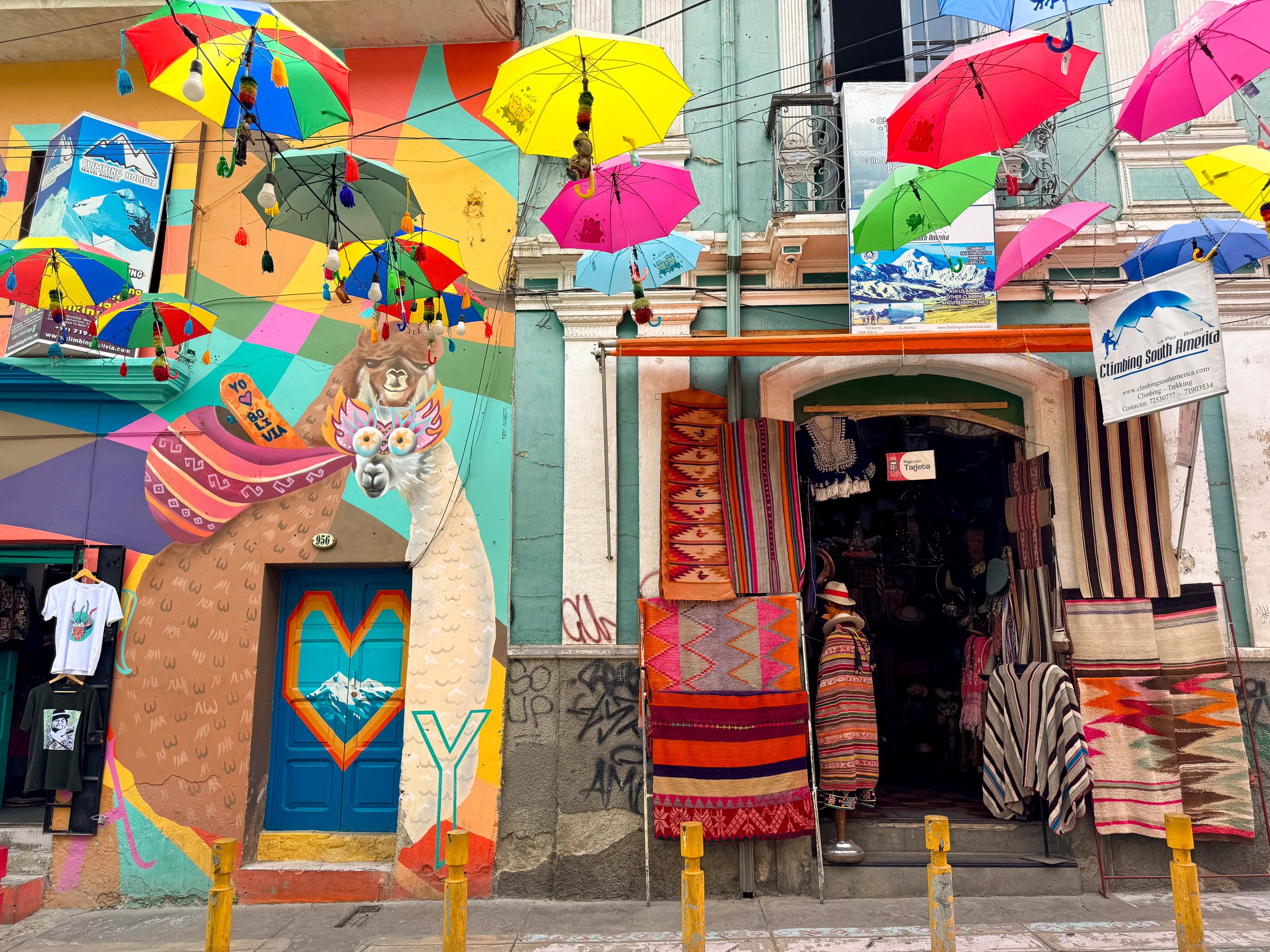
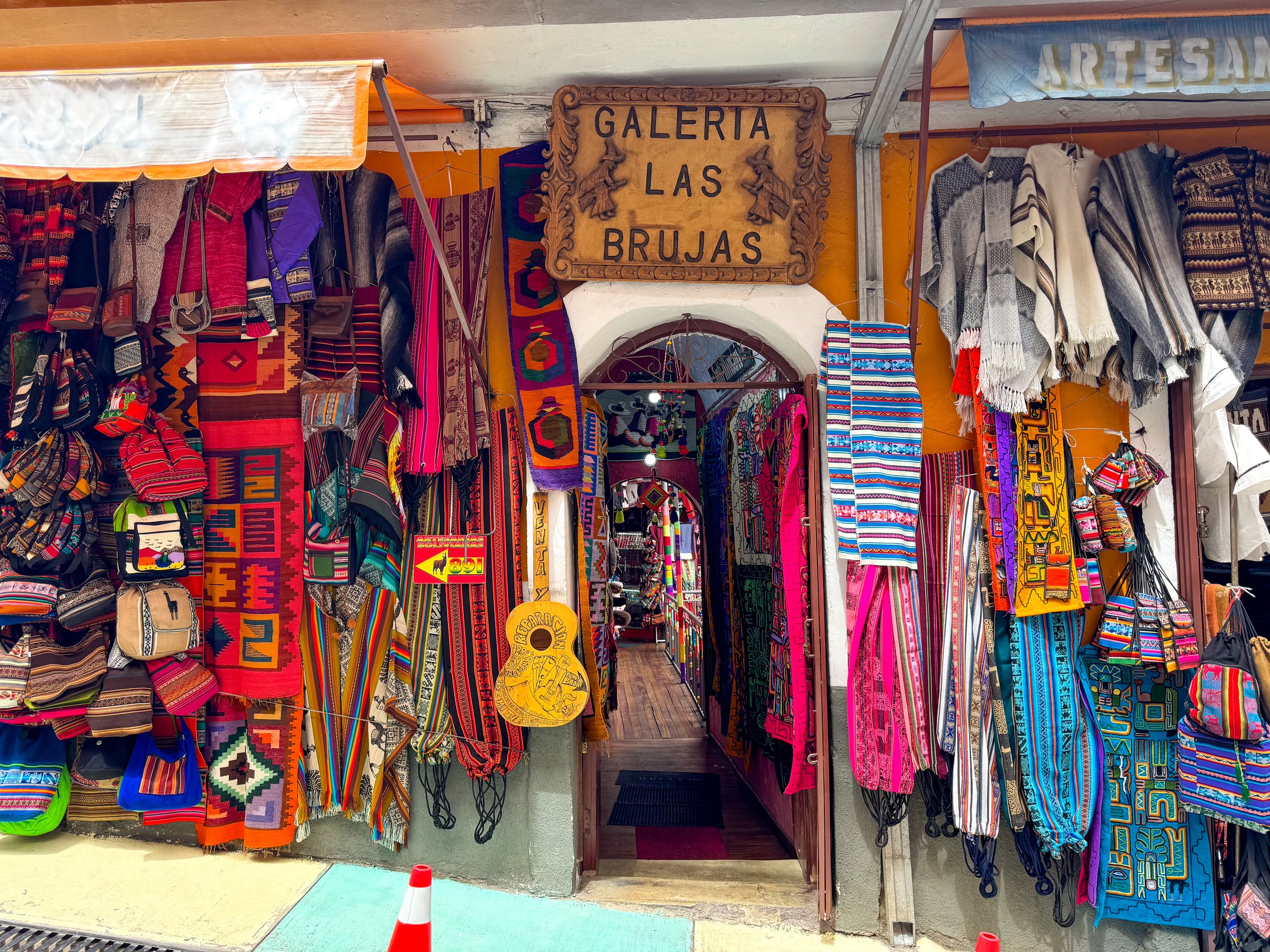
Mercado de las Brujas. A market street covered in upside umbrellas and streamers with vendors selling musical instruments, hand woven textiles, antique indigenous artifacts and all types of machine made souvenirs. One of the draws are the dried llama fetuses and stuffed baby llamas suspended from shops. They’re used as offerings every August to Pachamama (Mother Earth) by the indigenous community.
Mercado Rodríguez. A street market with vendors selling vegetables, fruits, herbs, breads and spices. There is an indoor market for fresh cut flowers and meats.
Where to Eat & Drink
Ali Pacha. A fine dining vegetarian restaurant offering surprise tasting menus blending Bolivian ingredients with international cuisine. We celebrated my birthday here opting for the standard tasting menu paired with Bolivian red wine. Our menu came with a cassava croquette, sourdough breads, fermented quinoa stew, purple corn tacos, quinoa dumplings and two deserts.
Paceña La Salteña. A restaurant chain that bakes the beloved Bolivian street food, Salteña. Any location is a reliable spot to find a vegetarian version.
Cielo Bar. A high end feeling cocktail bar in the 38th floor of Bolivia’s tallest building with views of the city and mountains. We came here for drinks at sunset!
El Bestiario. A bohemian style and queer friendly bar that specializes in gin cocktails made from their house gin. We met up with new friends here, sipping on incentive concocterions and classics like the Negroni. Try the Llamero Solitario, an aromatic gin cocktail made with a heavy garnish of Andean herbs or the Api Love made with purple corn.
Retrato Cafe. A cozy cafe in Sopocachi that feels more like someone’s house than a coffee shop. We came here for Bolivian coffee and breakfast dishes.
Hb Bronze Coffee Bar. A romantic coffee bar with table side and candlelight coffee preparation of your choice. They specialize in geisha coffee, coffee infused cocktails and wines.
Eli’s Pizza. A restaurant in an old train car at the Central Station with pizzas and salteñas, including vegetarian options.
Friddo. An ice cream cart at the Central Station serving Bolivian flavors like dulce de leche, mocha, cherimoya and tumbo.
What to Eat & Drink
From street food to contemporary cuisine, La Paz is a gastronomic hub for Andean and Amazonian flavors.
Salteñas. A savory Bolivian pasty that’s a cross between a baked empanada and a soup dumping. A semi-sweet dough that caramelizes along the crimped edges filled with stewed meats or veggies and a sauce containing Andean spices. They’re often served from morning through mid-afternoon.
Plato Paseño. The national dish made from choclo (corn), potatoes and habas (large green beans) boiled with anise, served with grilled Andean cheese and a portion of meat.
Sopa de Mani. A vegetarian soup made from peanuts, veggies and noodles. It’s often served with a side of a spiced herb sauce.
Trucha. Trout from Lake Titicaca or other Andean bodies of water. It’s often served while, either pan fried in butter and spiced or breaded and deep fried.
Cuñape. A cheesy bread ball made with queso fresco and mozzarella. It’s similar to Brazil’s pao de queijo.
Tropical Fruits. A majority of Bolivia is within the Amazon which supplies the country with an array of tropical and exotic fruits. Some include, tumbo, cherimoya, mango, kiwi, banana, avocado and papaya are common.
Pasankallas. A snack similar to popcorn made from large corn kernels that have been dried, puffed and then coated with sugar, salt or other spices.
Paceña. A classic pilsner and Bolivia’s national beer.
Ch’Ama. A craft beer made with coca leaves.
Chuflay. A traditional Bolivian cocktail made from singani, a distilled grape liquor, a soda such as sprite or ginger ale and sliced of lemon served on the rocks.
Getting Around
Mi Teleferico. A transit network of cable cars used to get around the city. It’s by far the best way to get around La Paz and sight see. There are several different color coded lines that connect the city, cross valleys and reach into the mountains, each with unique aerial views of the city and Andean landscape. We purchased a rechargeable card to share with fares costing a couple Bolivar per ride.
By Uber. For distances not reachable by the Teleferico, we took Ubers to get around. They are readily available and inexpensive.
Good to Know
Cash vs Card: Cash is most commonly accepted. Very few places accept debit or credit card
Currency: The Bolivian Bolivar is the only accepted currency however US dollars can be exchanged for rates higher than the accepted rate.
Altitude: La Paz is the highest capital city in the world at an altitude of 12,000ft above sea level. It you haven’t acclimated, it can be tiring and different.
UV Protection: With the high altitude, the UV is significantly harsher than at sea level. Pants, long sleeves, sunglasses and broad spectrum sun block is necessary not to burn.
Water: The tap water is unsafe to drink, even if boiled. It’s often contaminated with heavy metals by run off from nearby mines. Drink filtered or bottled water only.
LGBTQ+ Safety: Bolivia is increasingly accepting of LGBTQ travelers though it’s not common to display PDA.
For Next Time…
During our 3 days in La Paz, we spent our time exploring the city and tasting the cuisine. With more time, we would venture out to an archeological complex and the Amazon.
Tiwanaku Archaeological Complex. The ruins of a pre-Incan civilization’s capital with the stone walls, a large gate, statue and plazas. It’s located 2 hours south of La Paz.
The Bolivian Amazon. The sprawling South American Rainforest is located on the other side of the Andes less than 2 hours by car from La Paz.





